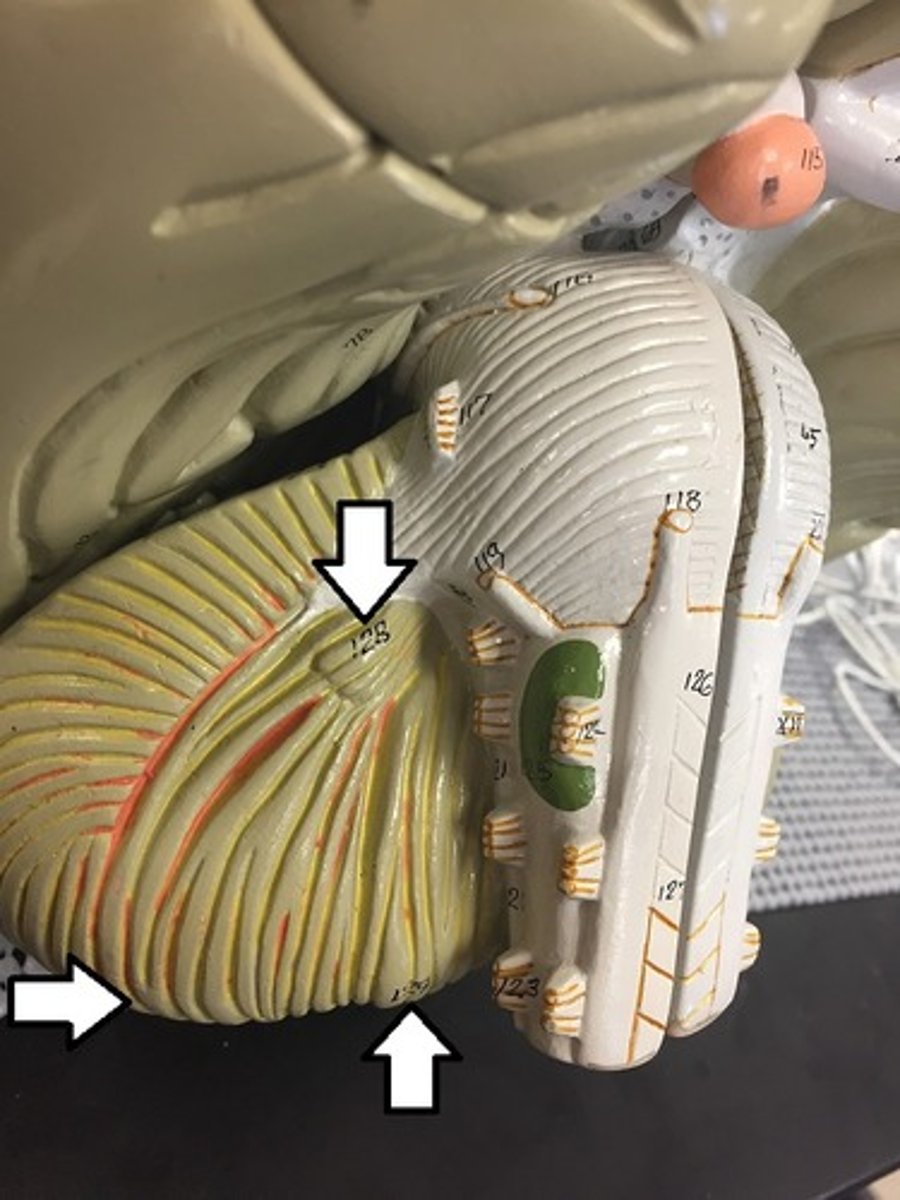Zoo Lab 252 Brain 3D Model
1/47
There's no tags or description
Looks like no tags are added yet.
Name | Mastery | Learn | Test | Matching | Spaced |
|---|
No study sessions yet.
48 Terms
Somatomotor Cortex-precentral gyrus, motor function
What is #1a and #10?
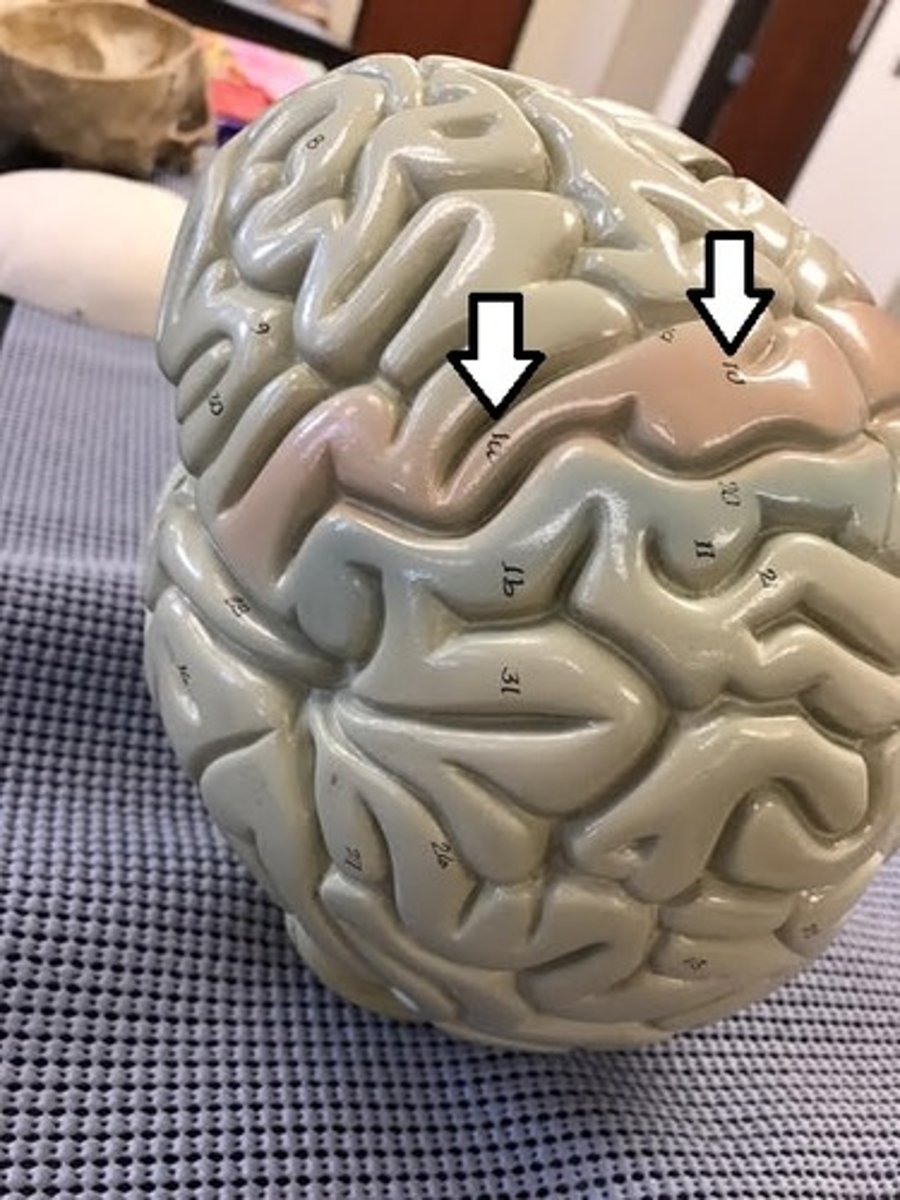
Somatosensory Cortex-postcentral gyrus, sensory function
What is #1b and #11?
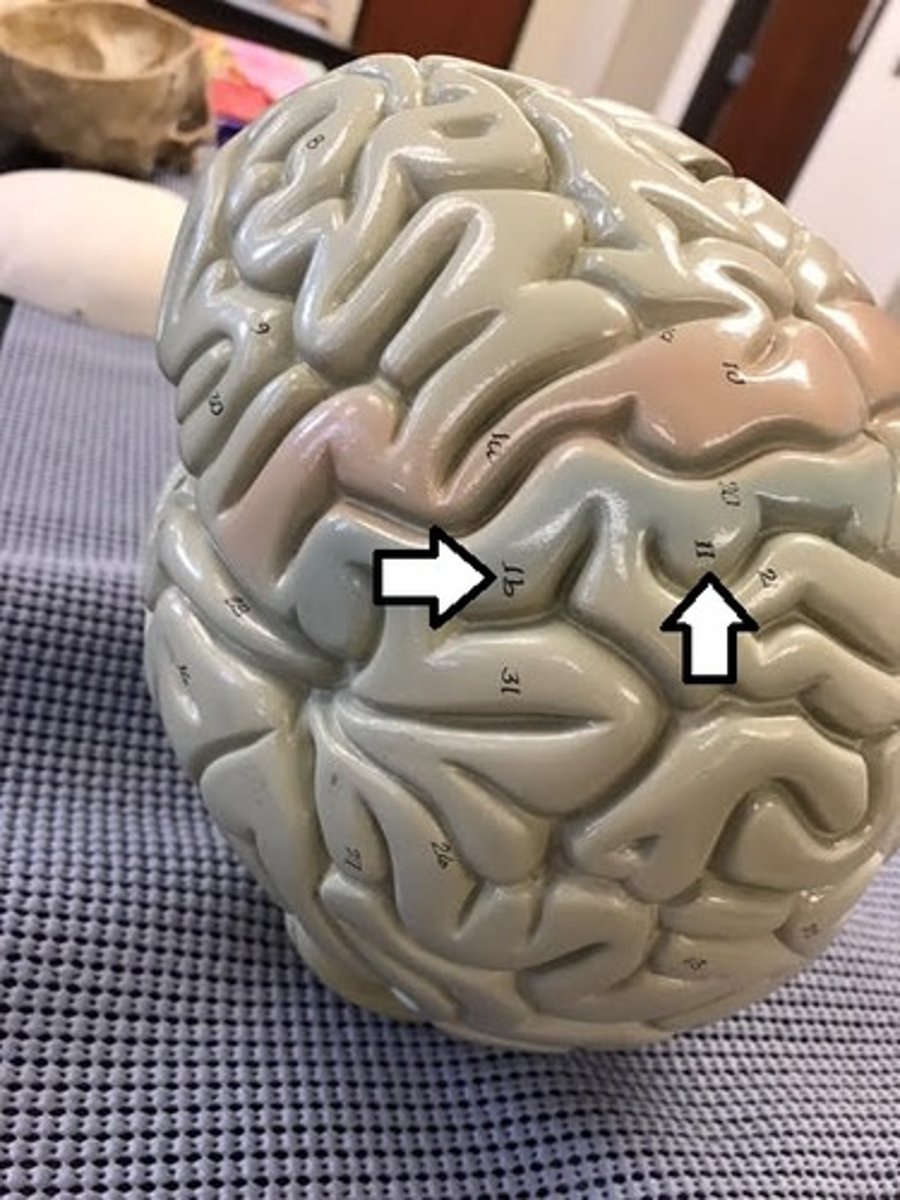
Frontal Lobe-higher order functions (thinking)
What is #2?
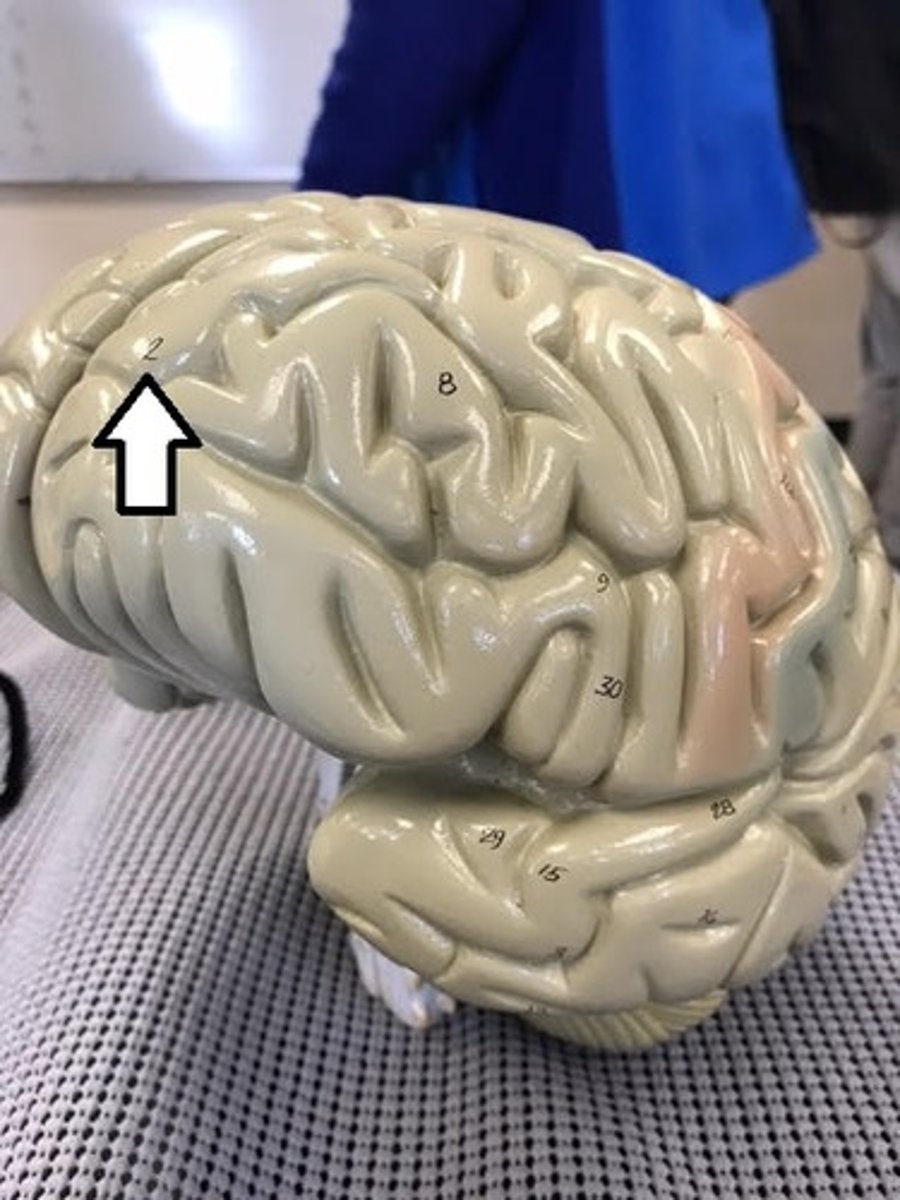
Temporal Lobe-learning and memory, limbic system (emotion)
What is #3?
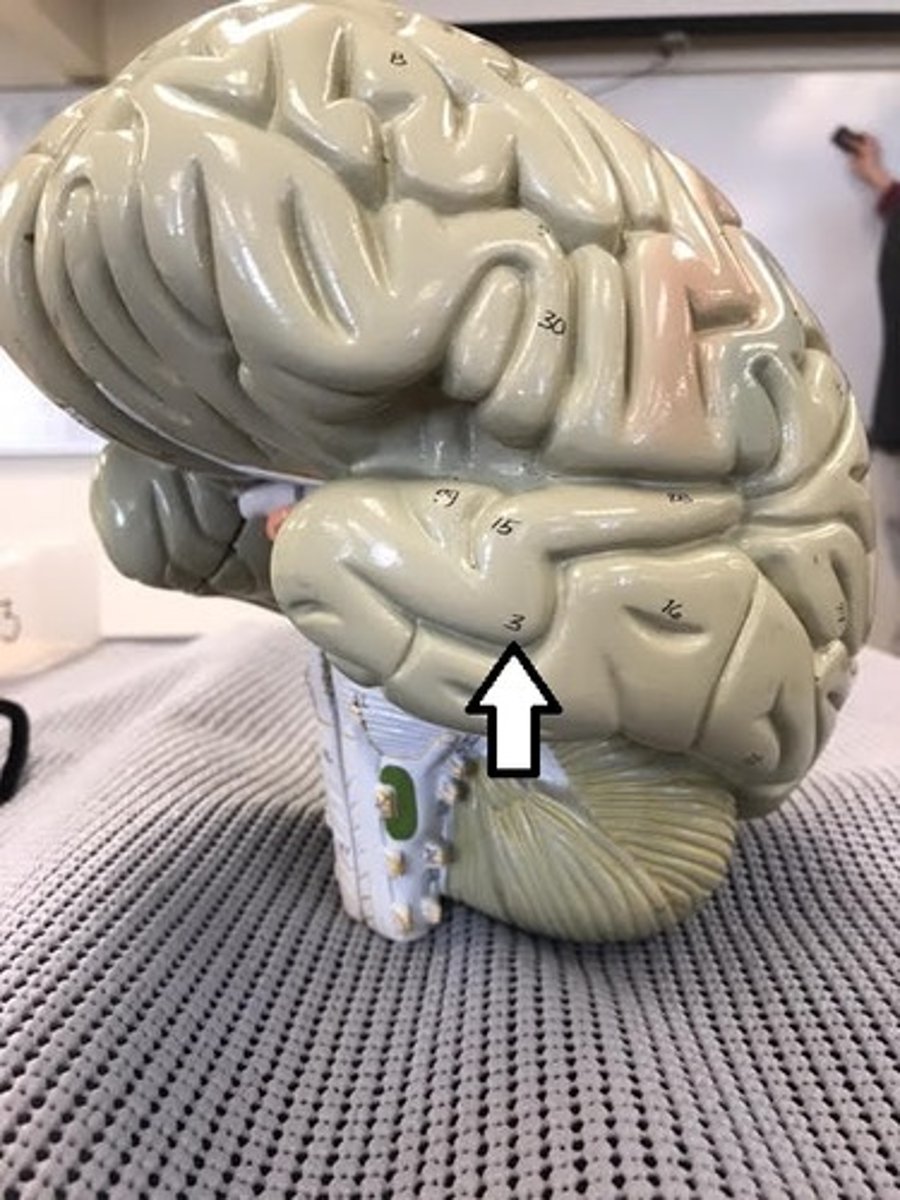
Parietal Lobe-sensory integration
What is #4?
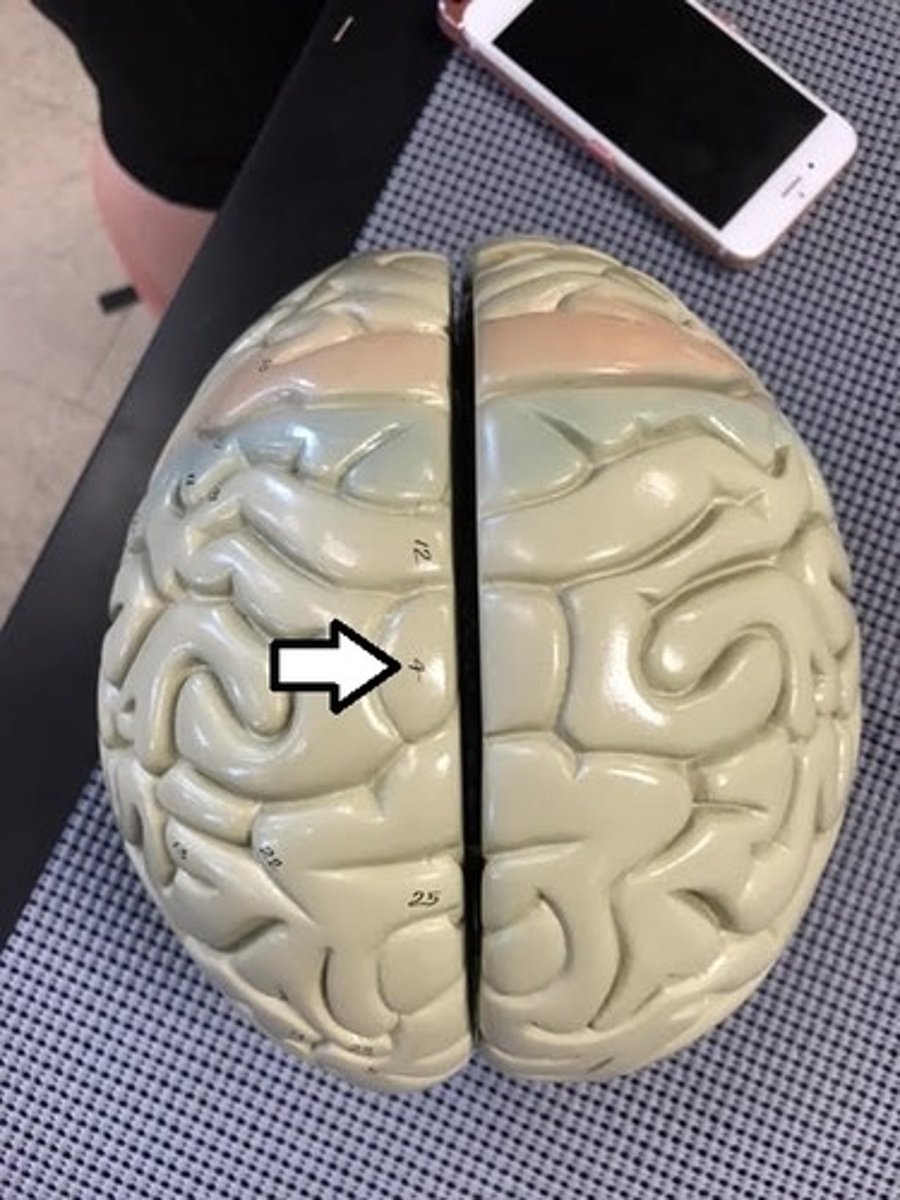
Occipital Lobe-vision
What is #5?
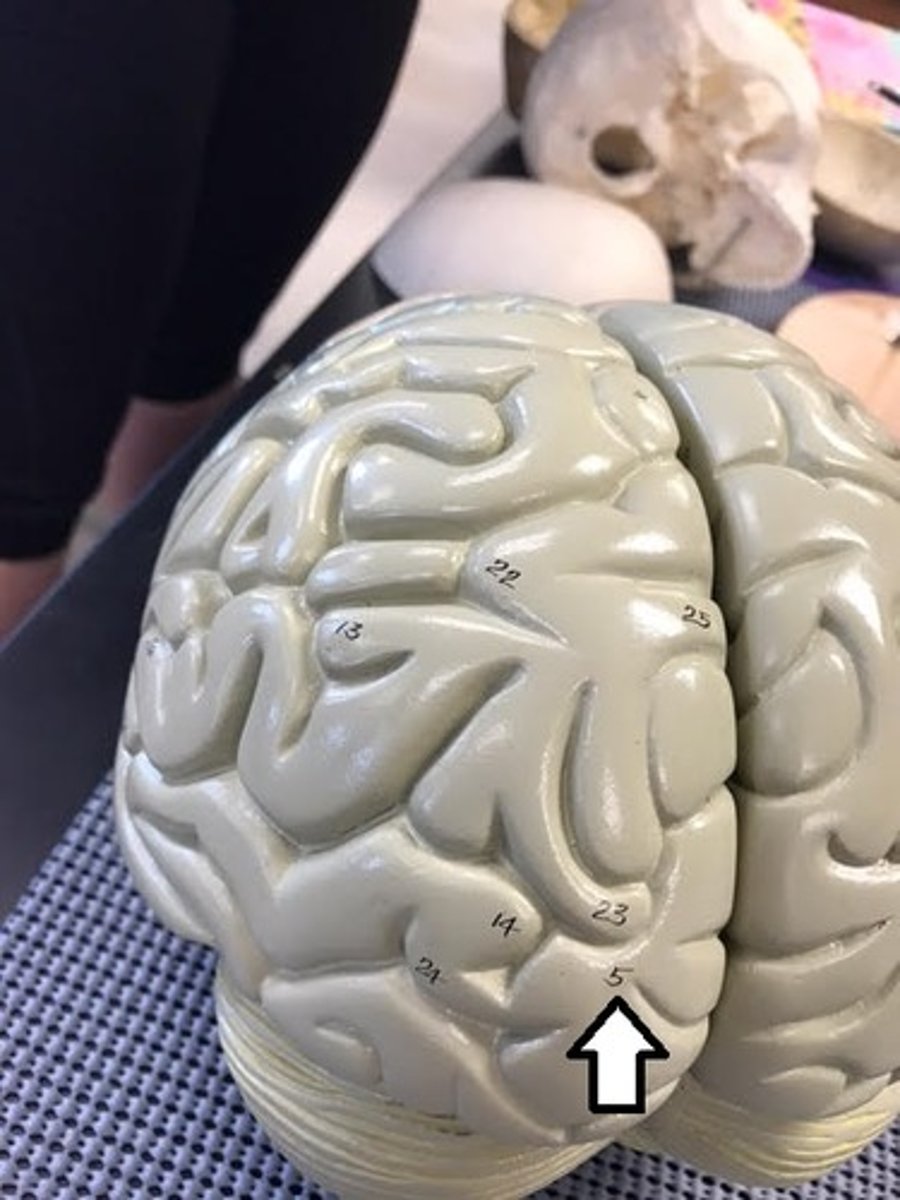
Cerebellum-motor function
What is #6?
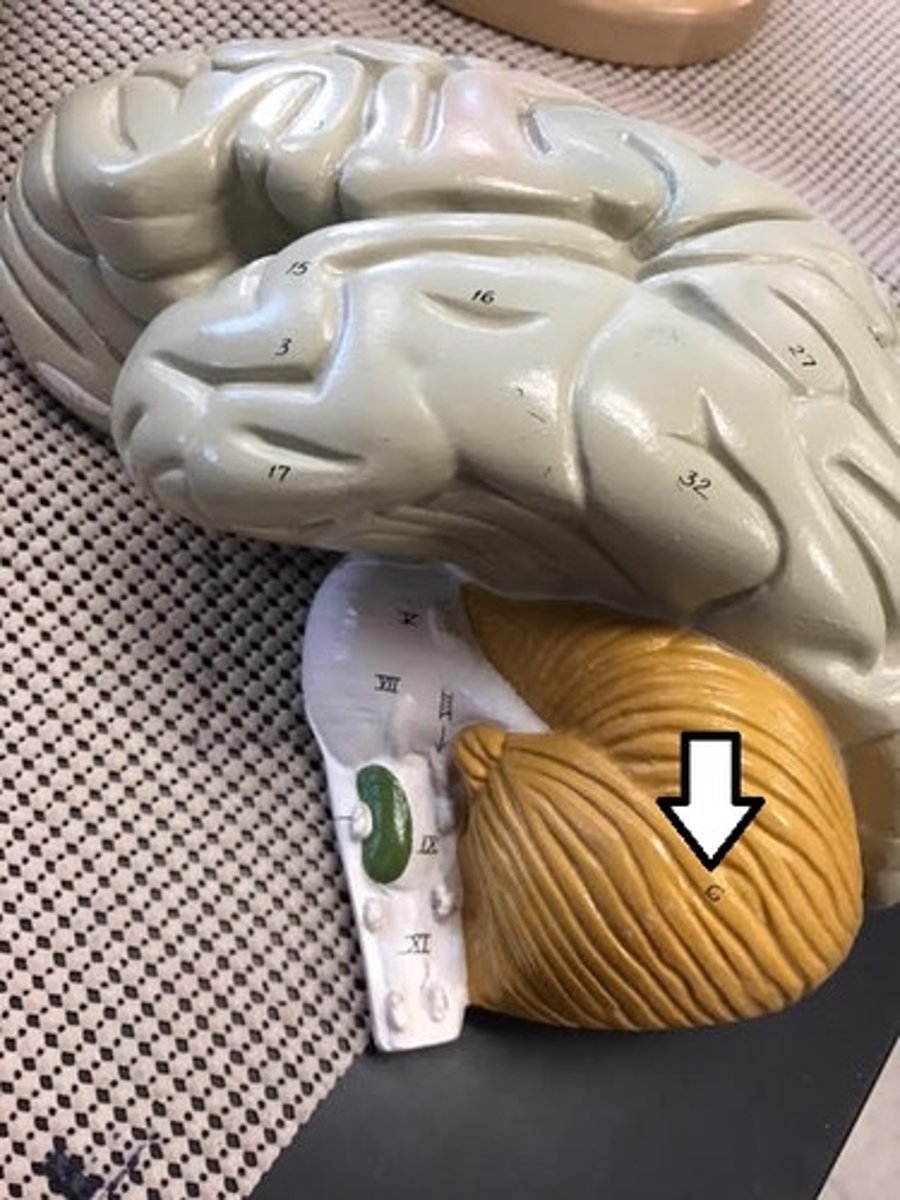
Central Sulcus-between precentral gyrus and postcentral gyrus
What is #20?
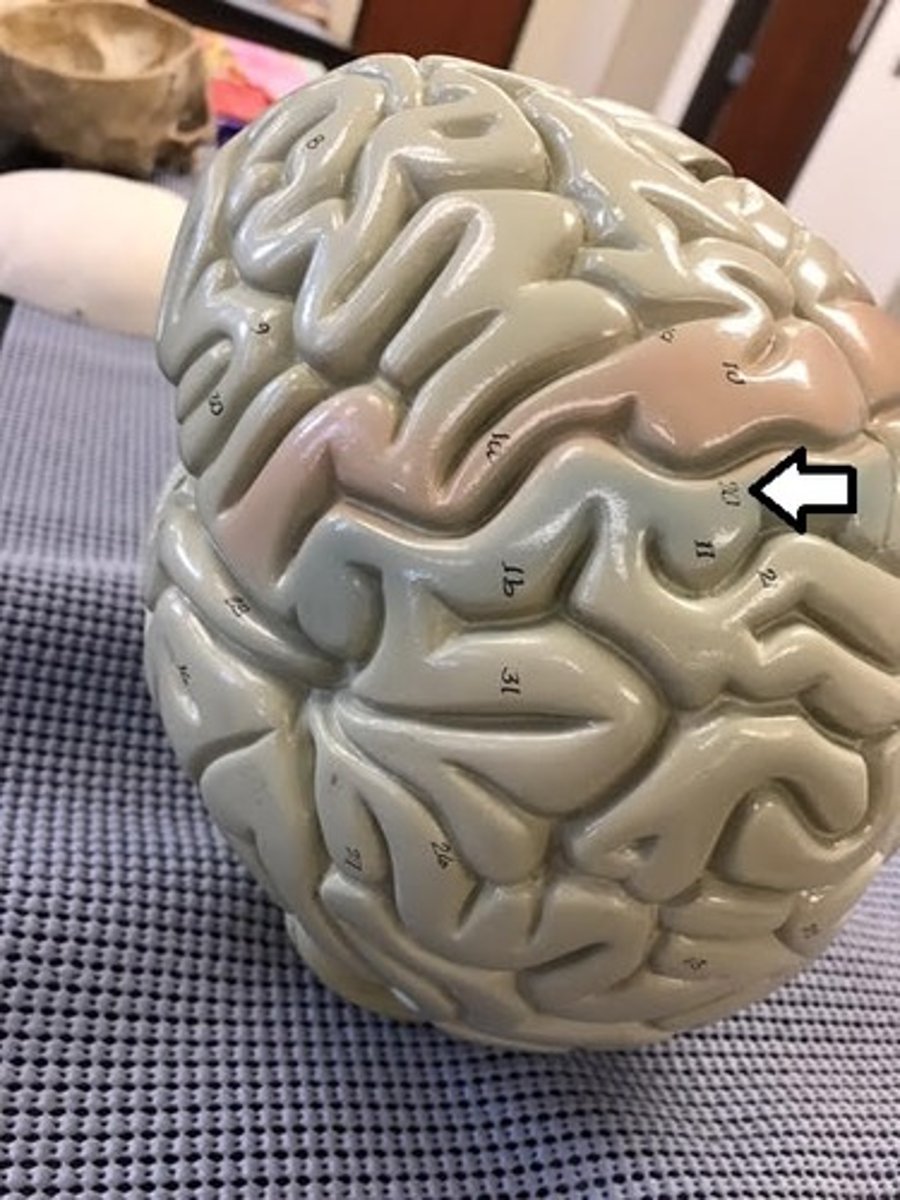
Parieto-Occipital Sulcus
What is #25?
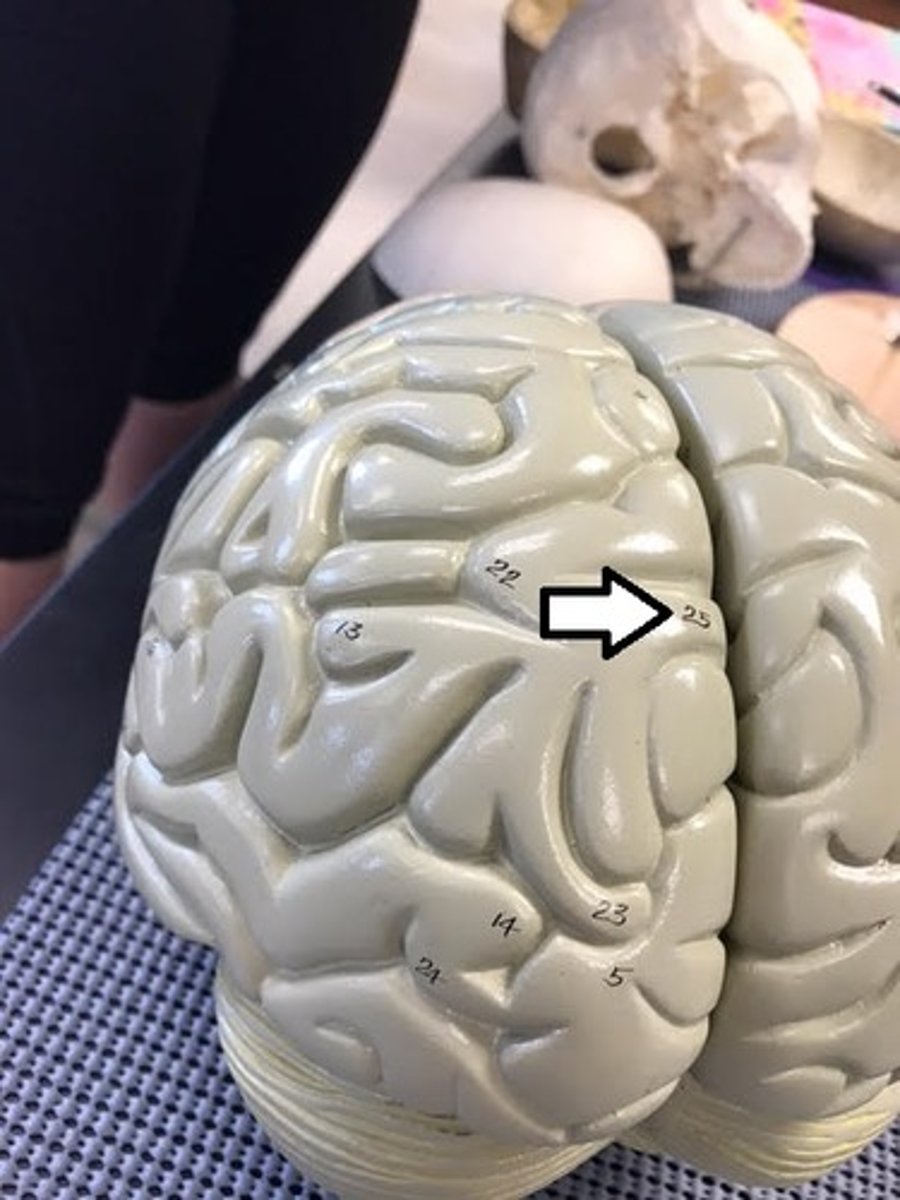
Lateral Cerebral Sulcus-(Sylvian fissure)
What is #28?
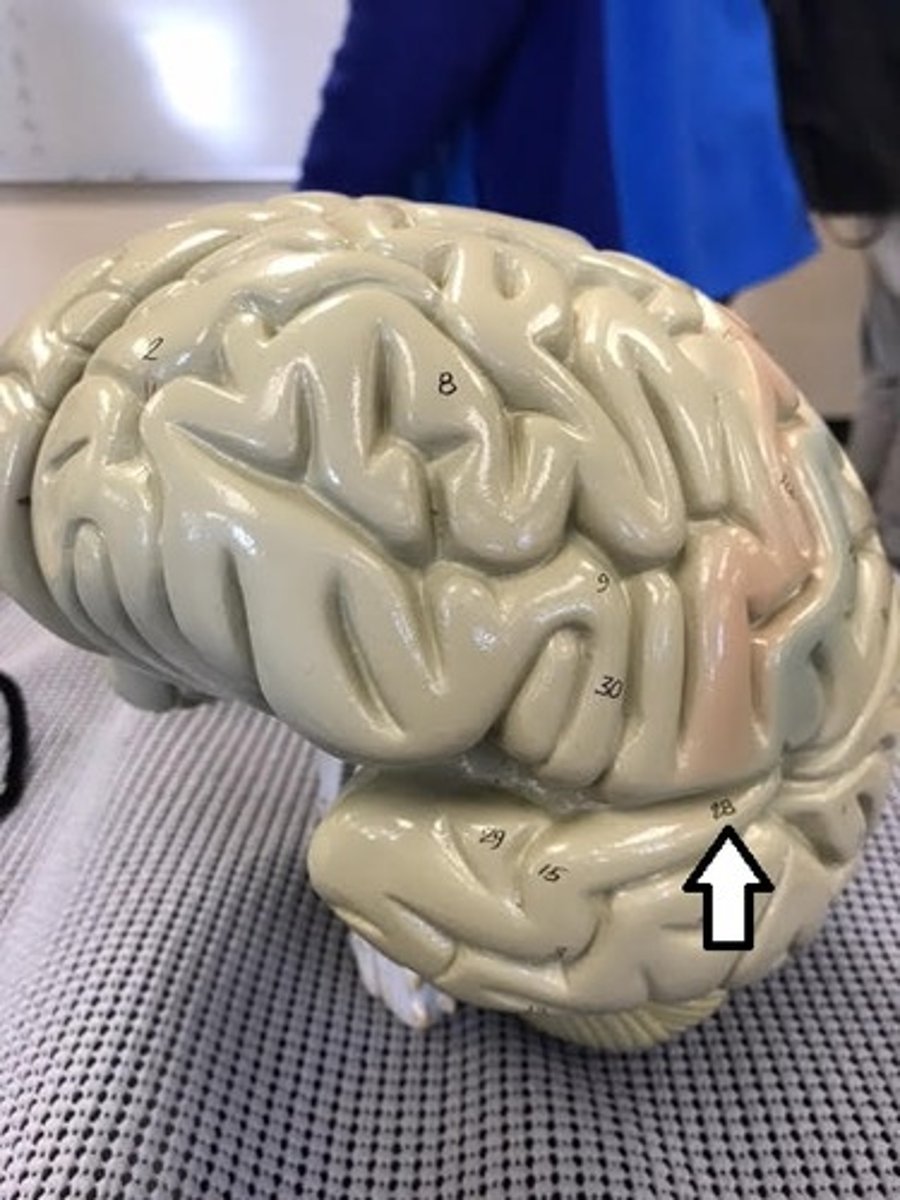
Cingulate Gyrus-limbic system (emotion)
What is #37?
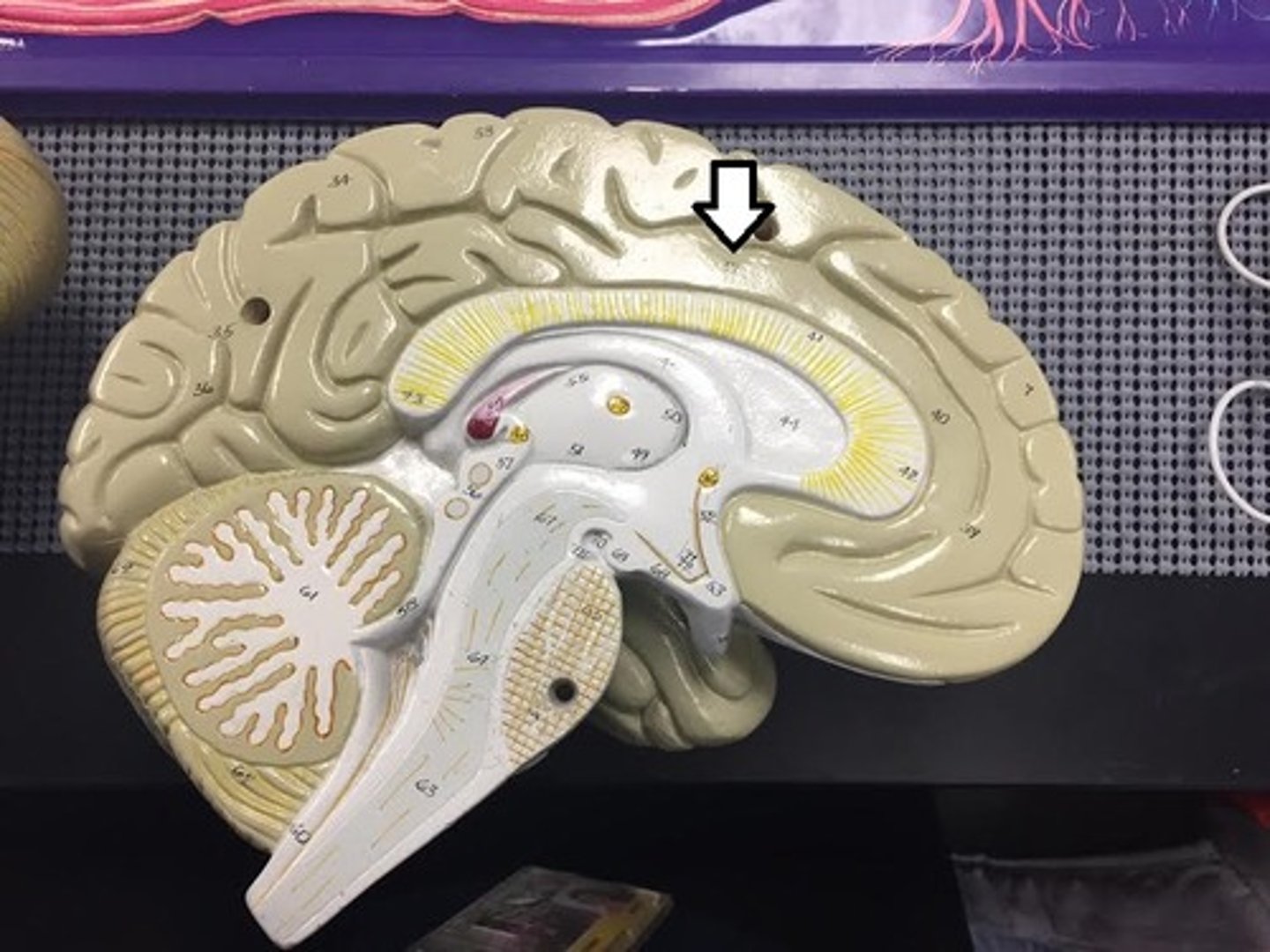
Body of Corpus Callosum-connection between right and left cerebral hemispheres
What is #41?
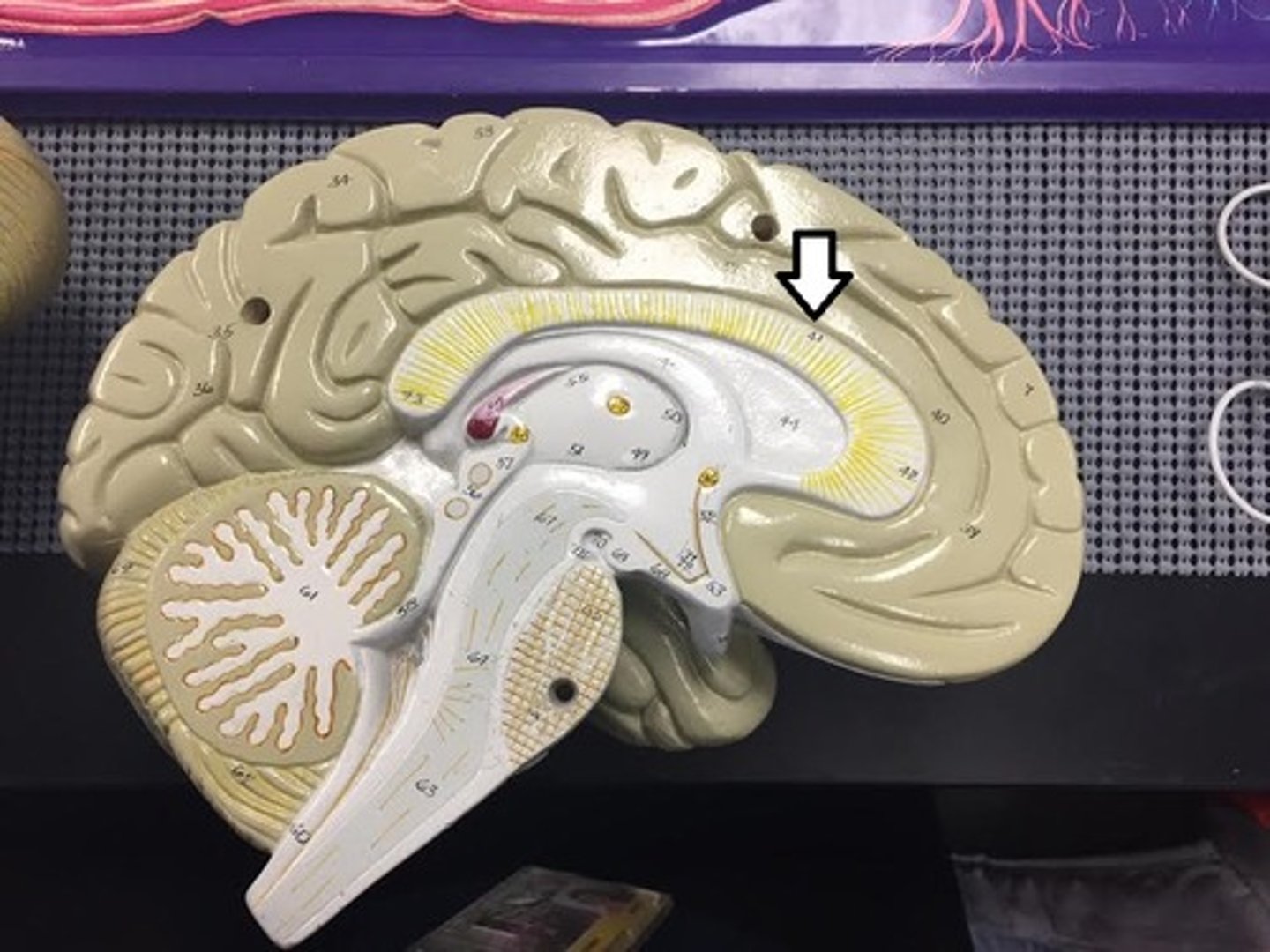
Genu of Corpus Callosum-connection between right and left cerebral hemispheres
What is #42?
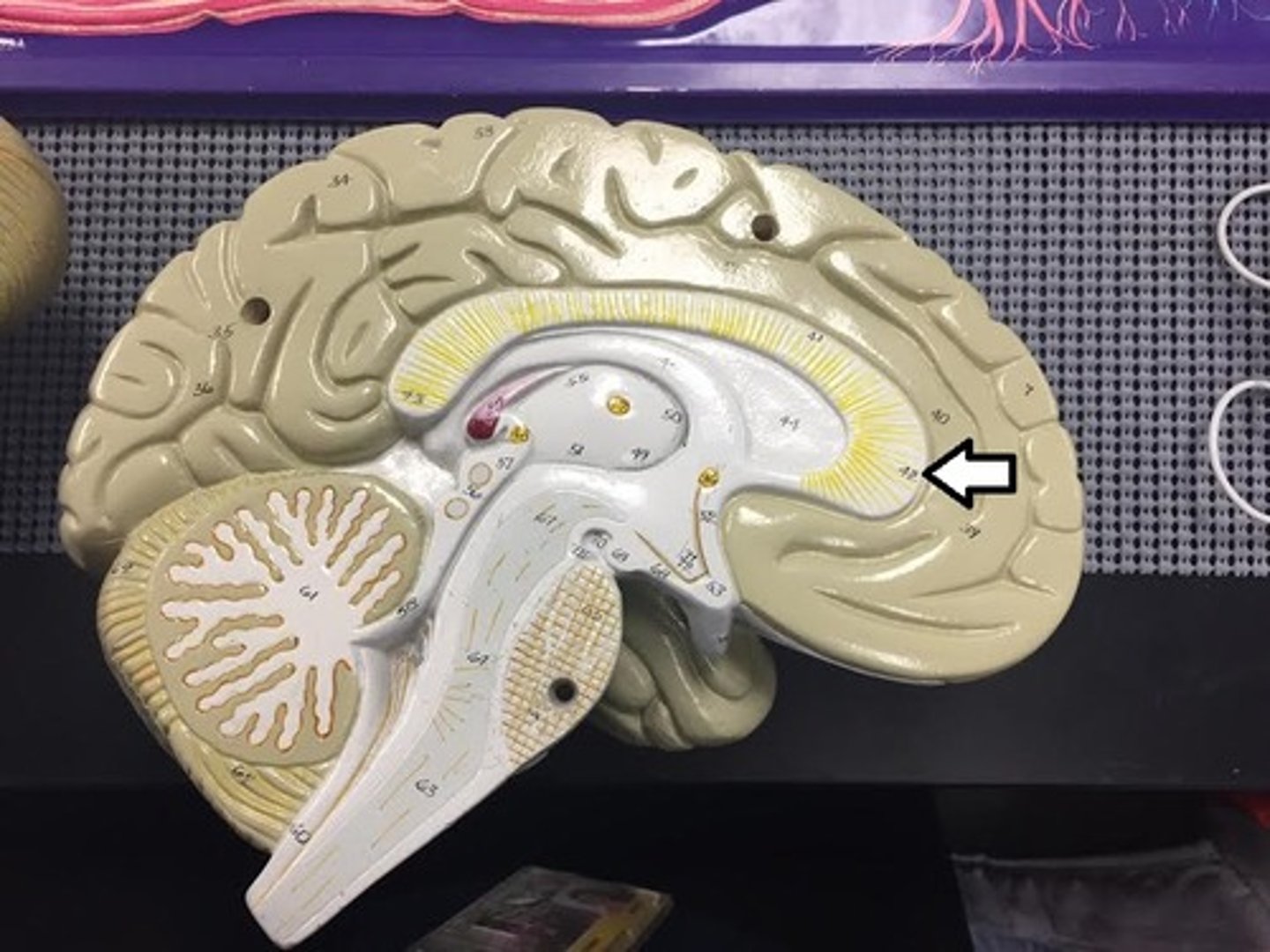
Splenium of Corpus Callosum-connection between right and left cerebral hemispheres
What is #43?
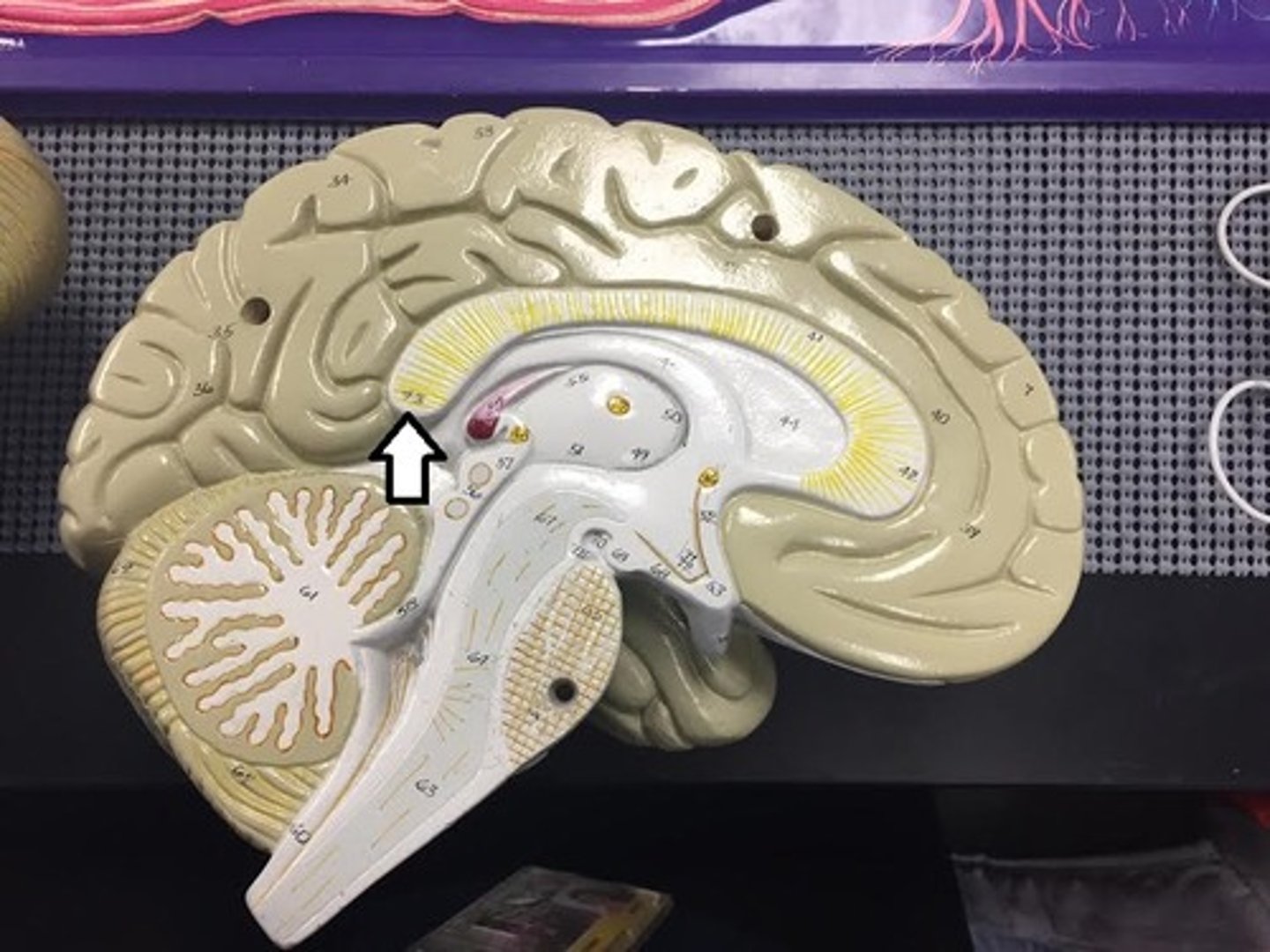
Septum Pellucidum-medial wall of lateral ventricle
What is #44?
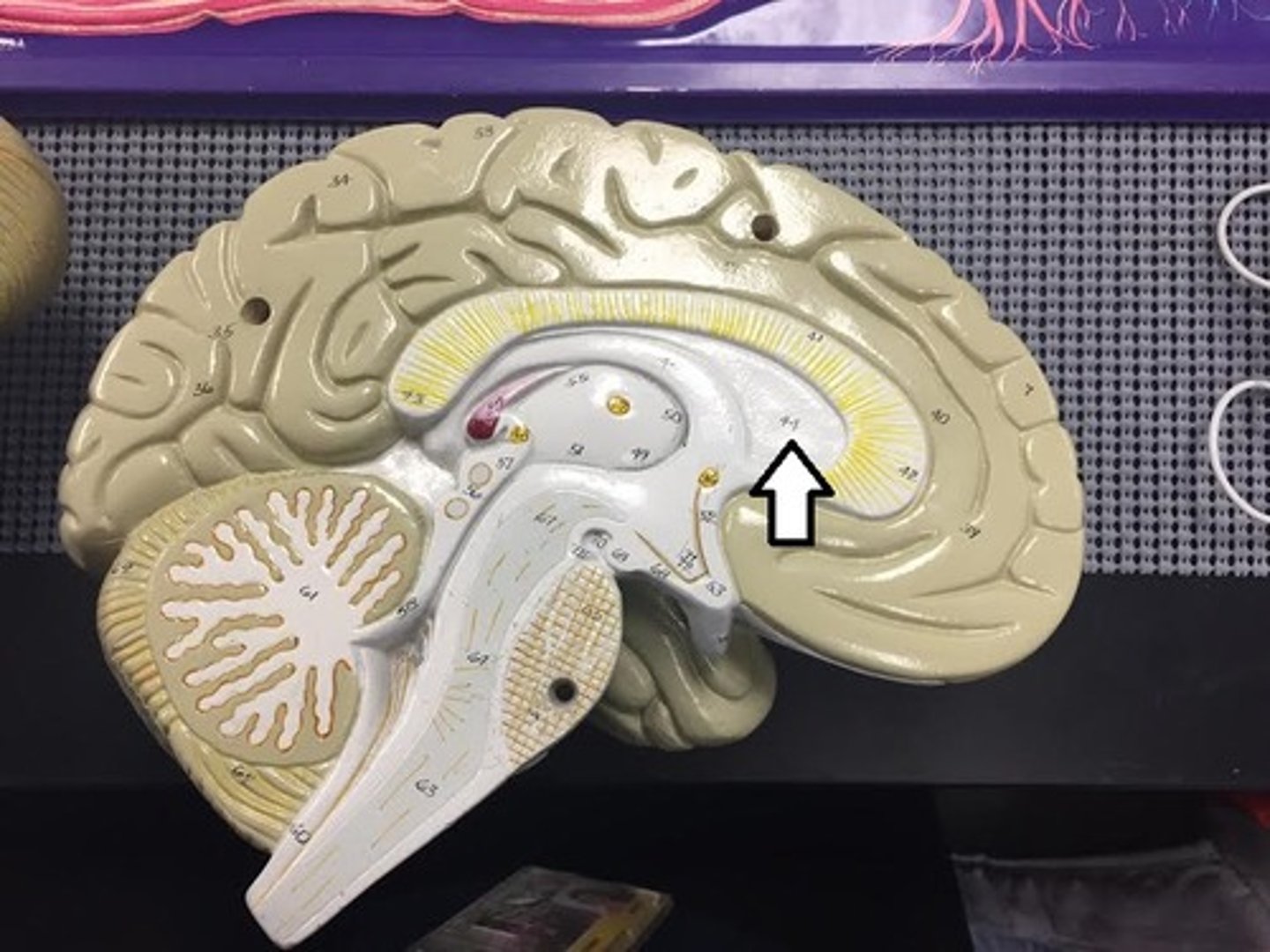
Body of Fornix-connection between hippocampus and many limbic structures
What is #45?
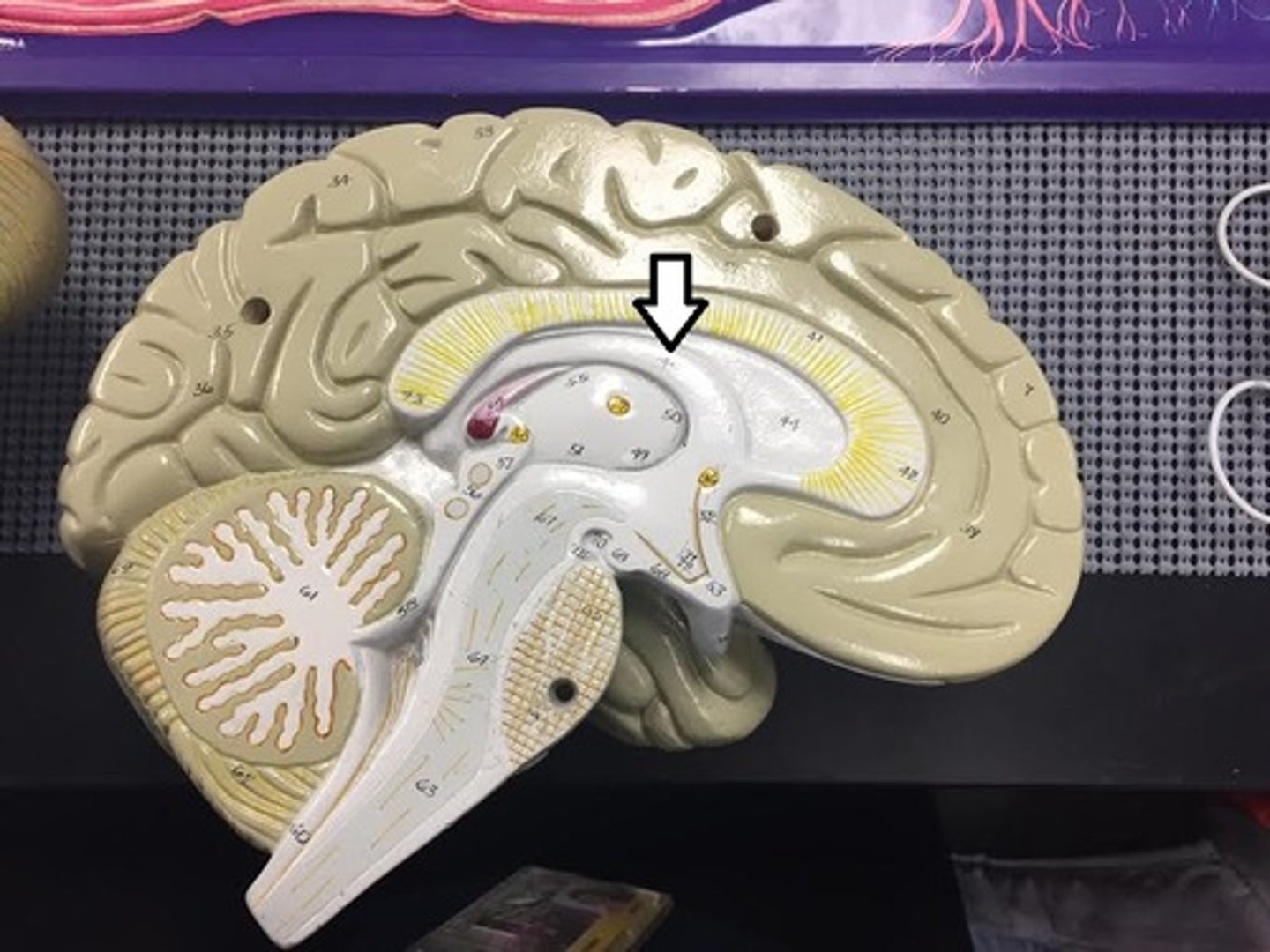
Anterior Commissure-connection between right and left cerebral hemispheres
What is #46?
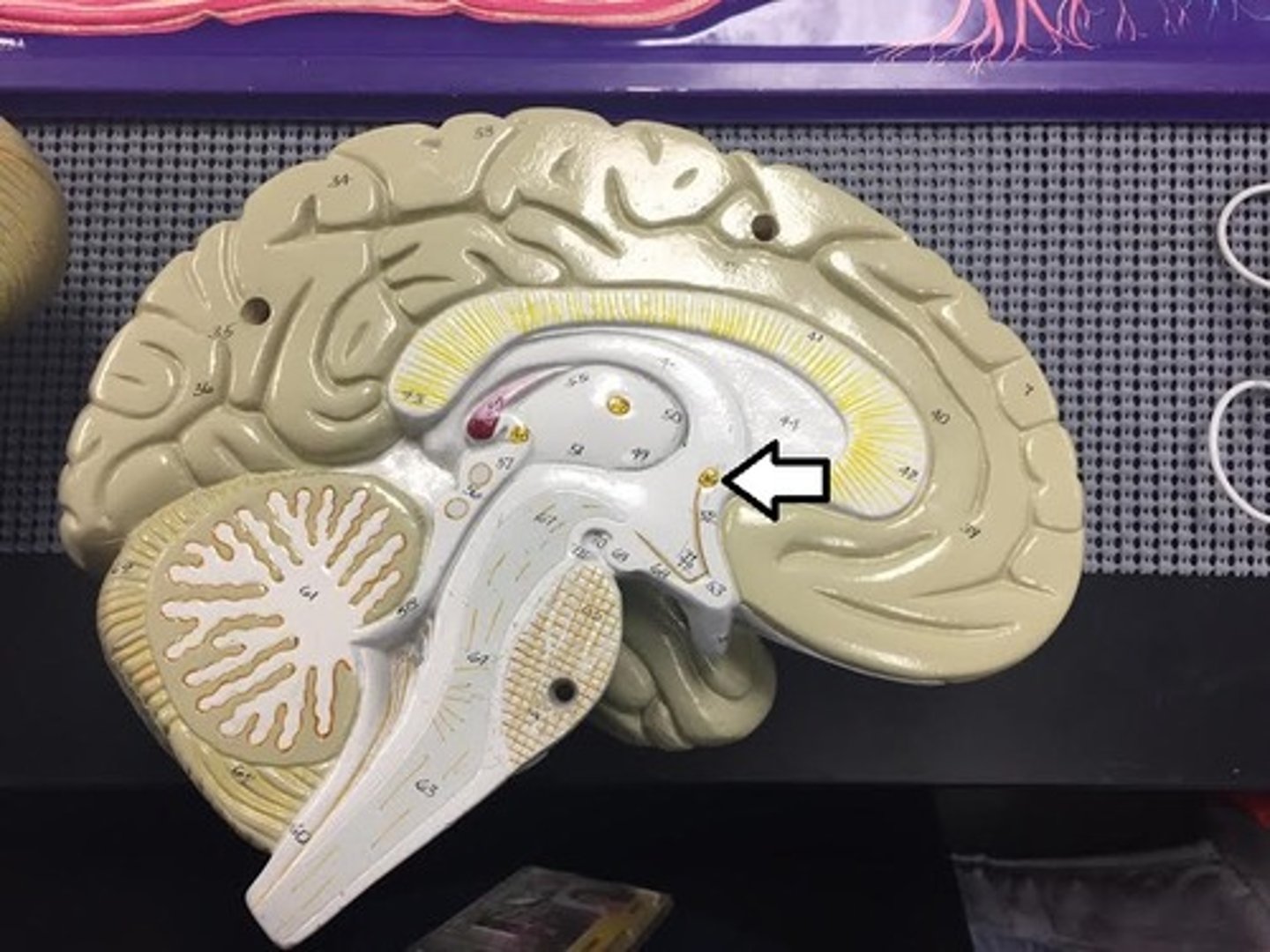
Massa Intermedia-connects left and right Thalamus
What is #47?
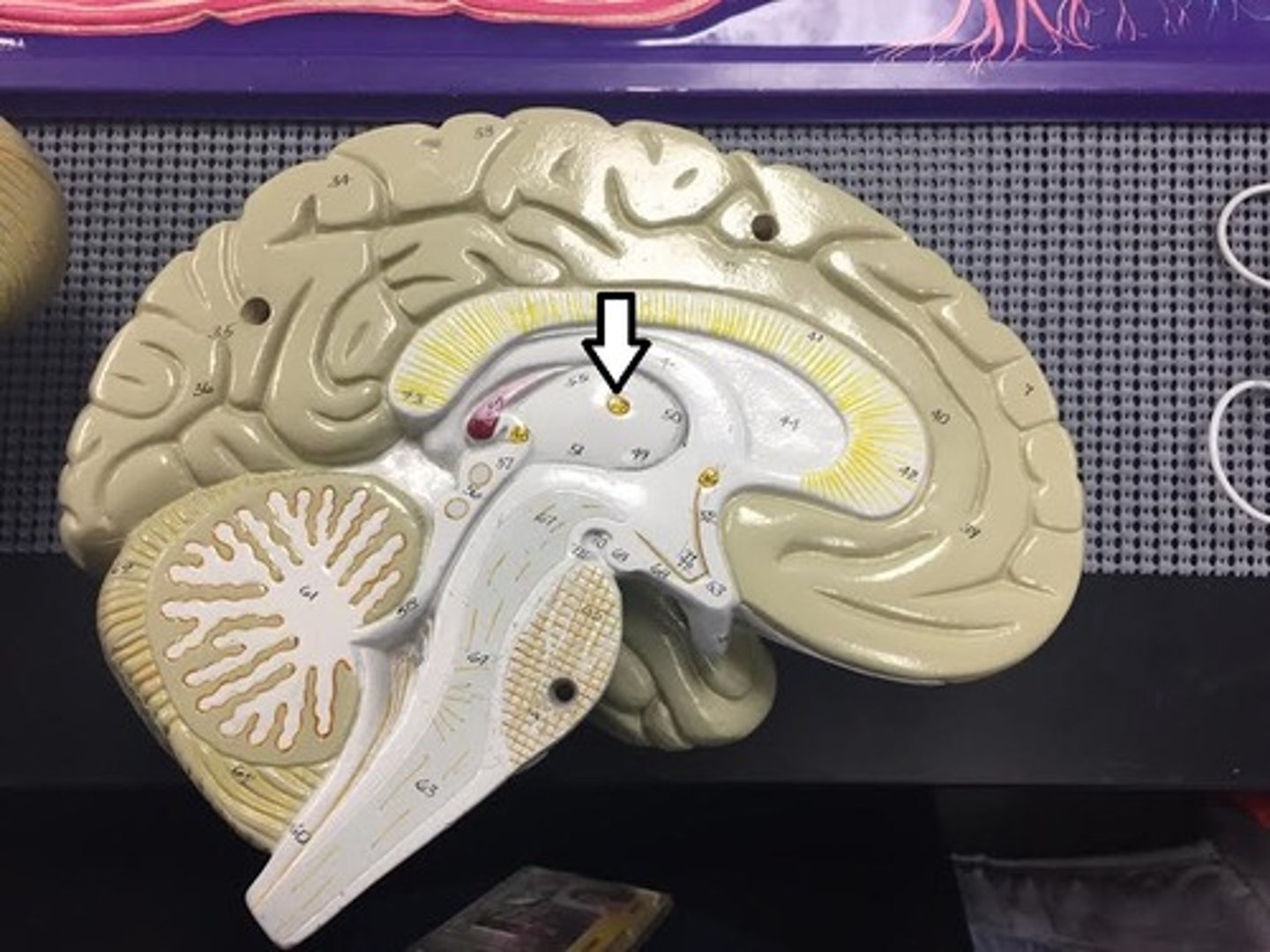
Thalamus-sensory input to cerebrum
What is #49?
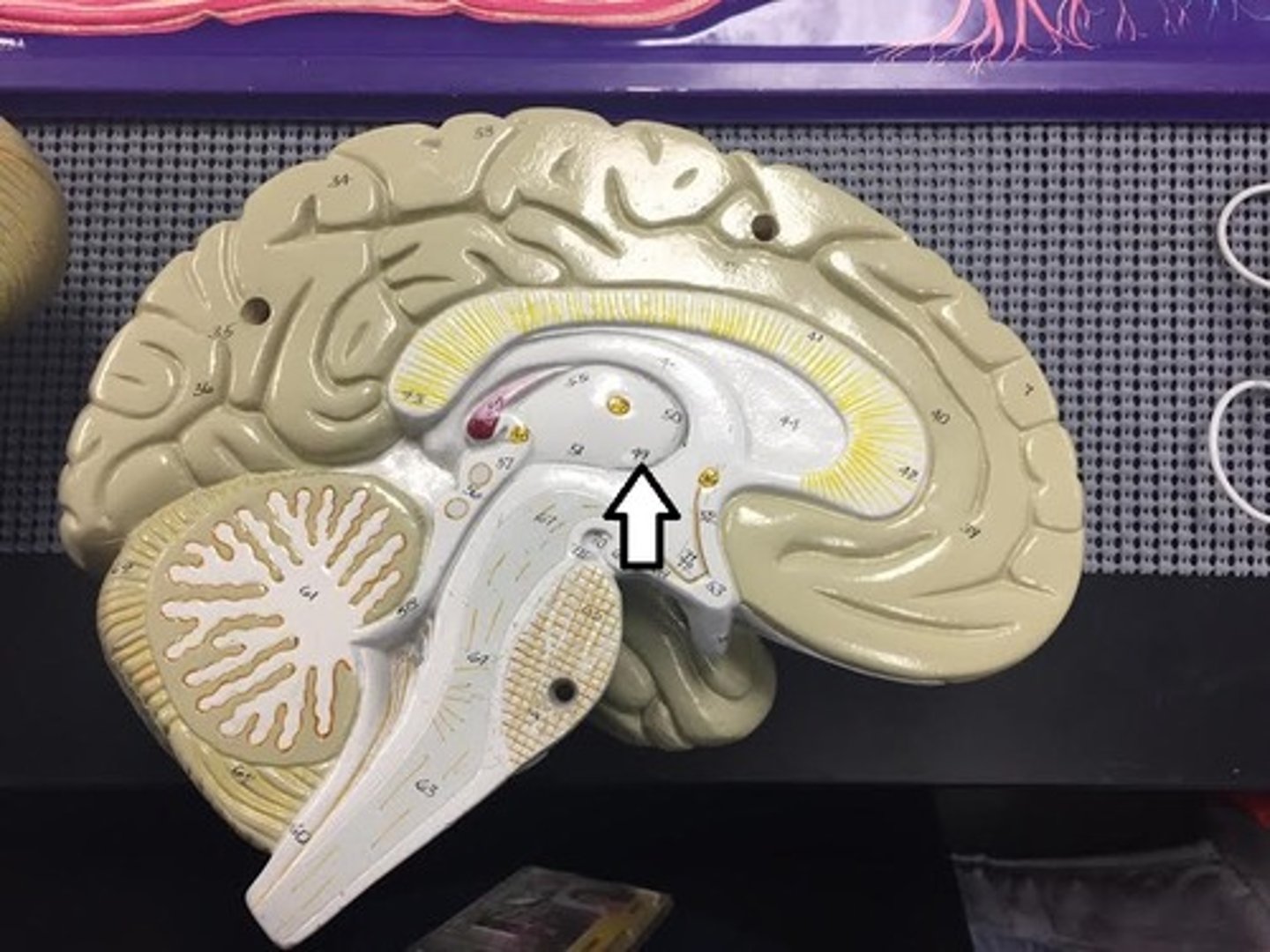
Hypothalamus-autonomic nervous system, neuroendocrine
What is #49a?
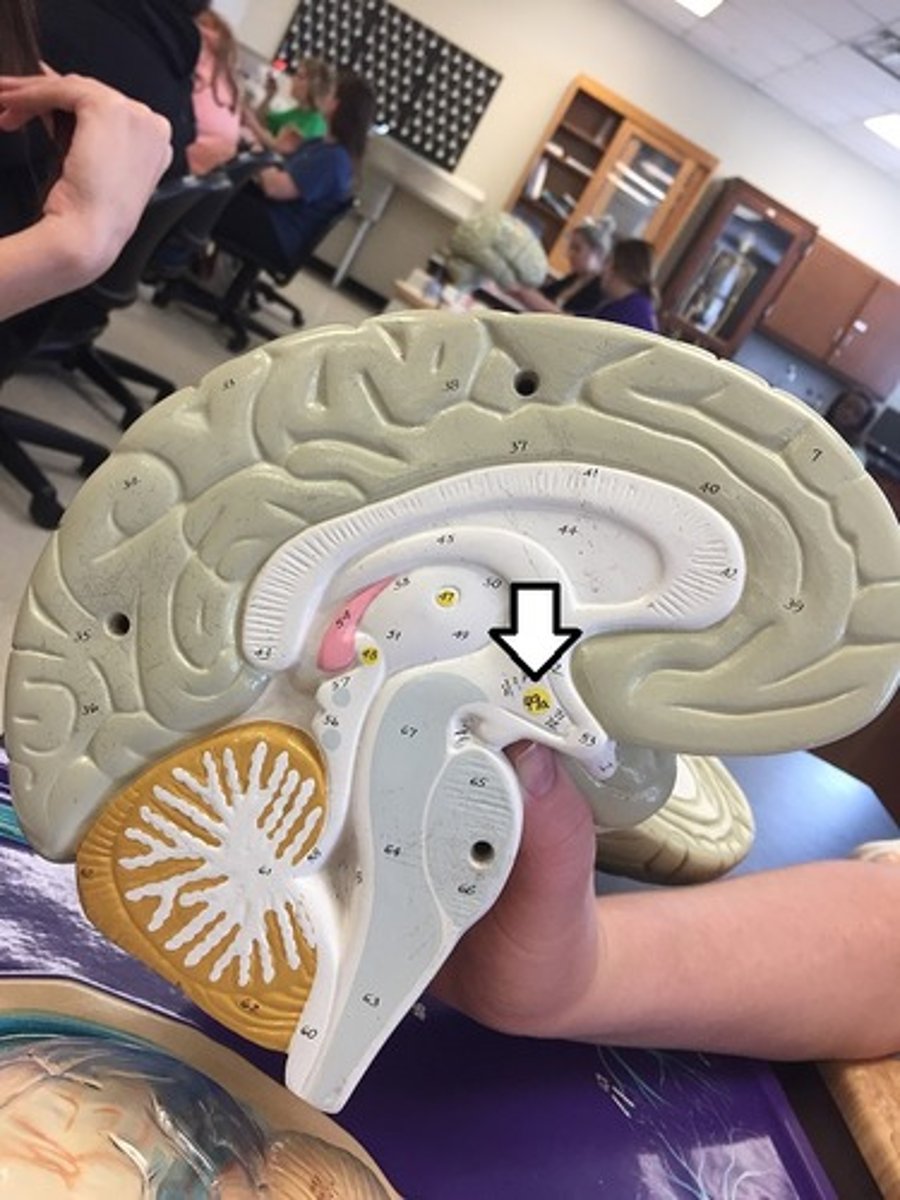
Optic Chiasma-crossing of optic nerves
What is #53?
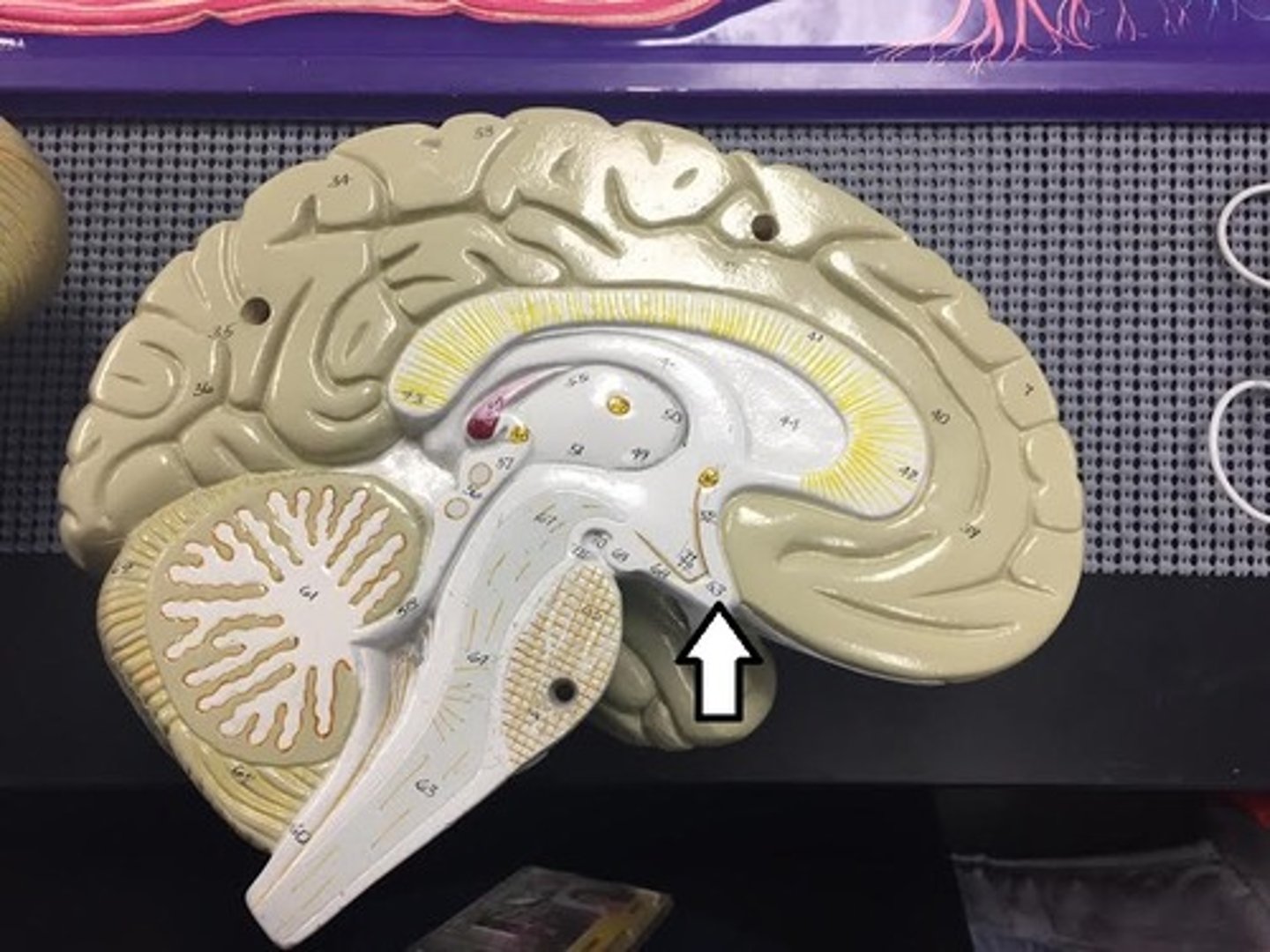
Pineal Gland-circadian rhythms, secretes the hormone melatonin
What is #54?
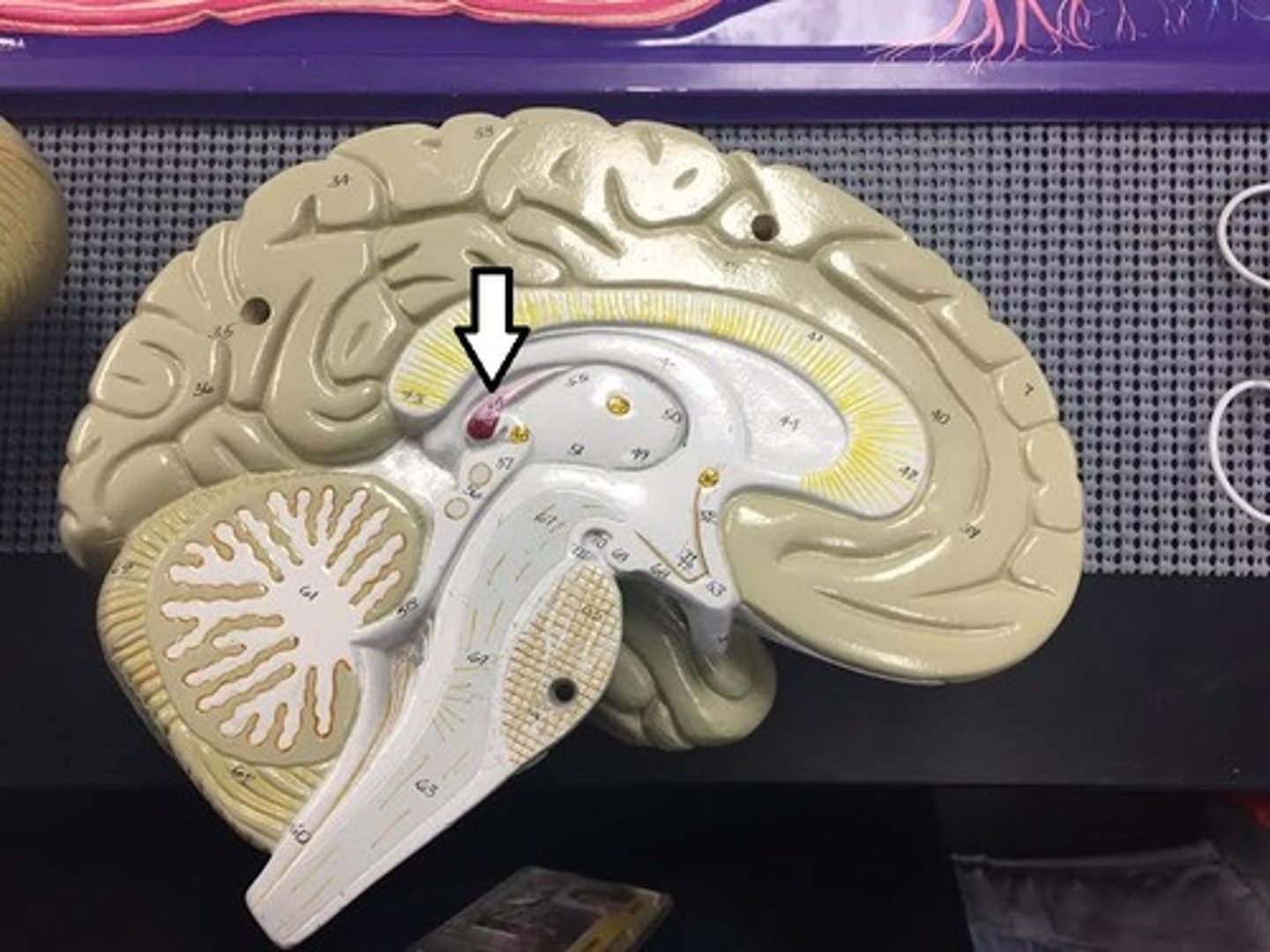
Fourth Ventricle-contains cerebral spinal fluid (CSF) produced in Choroid Plexus
What is #59?
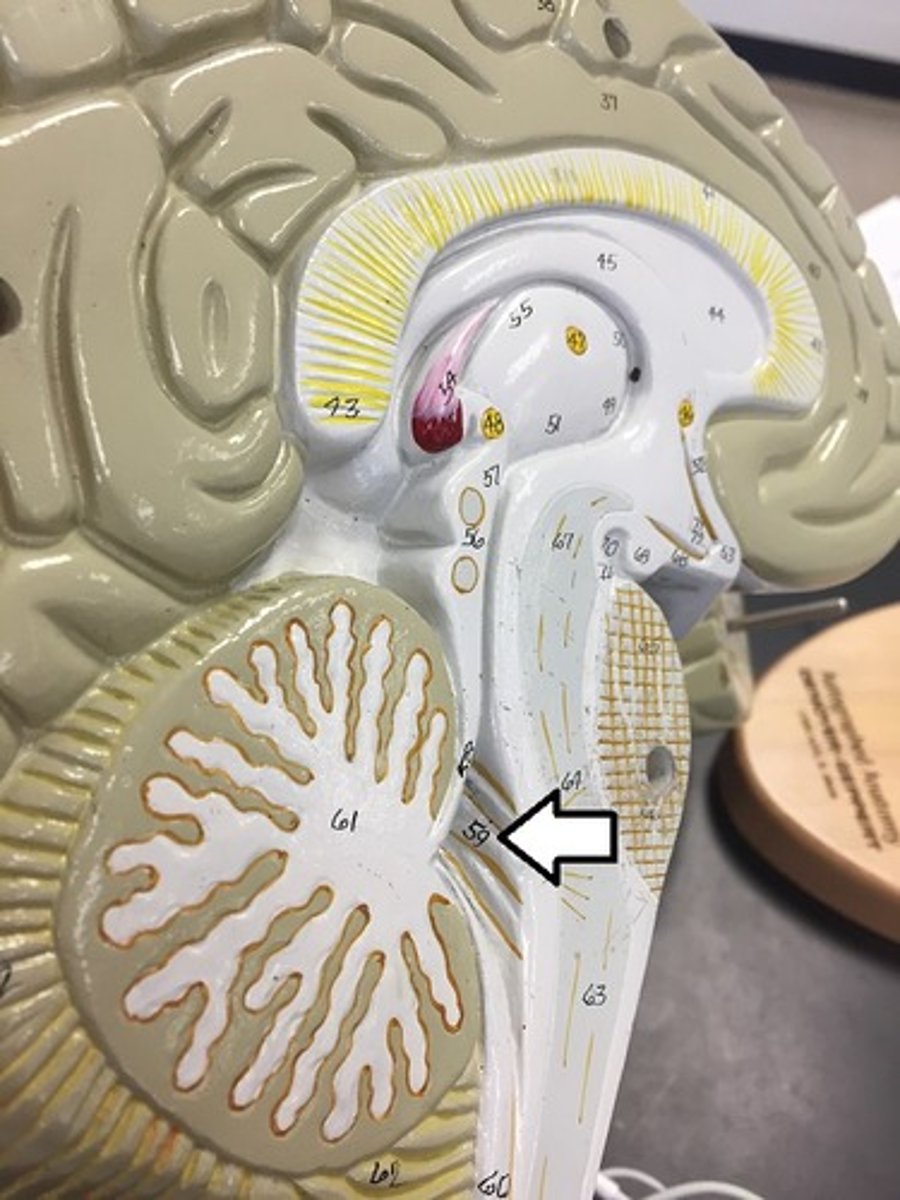
Arbor Vitae of Cerebellum-(white matter)
What is #61?
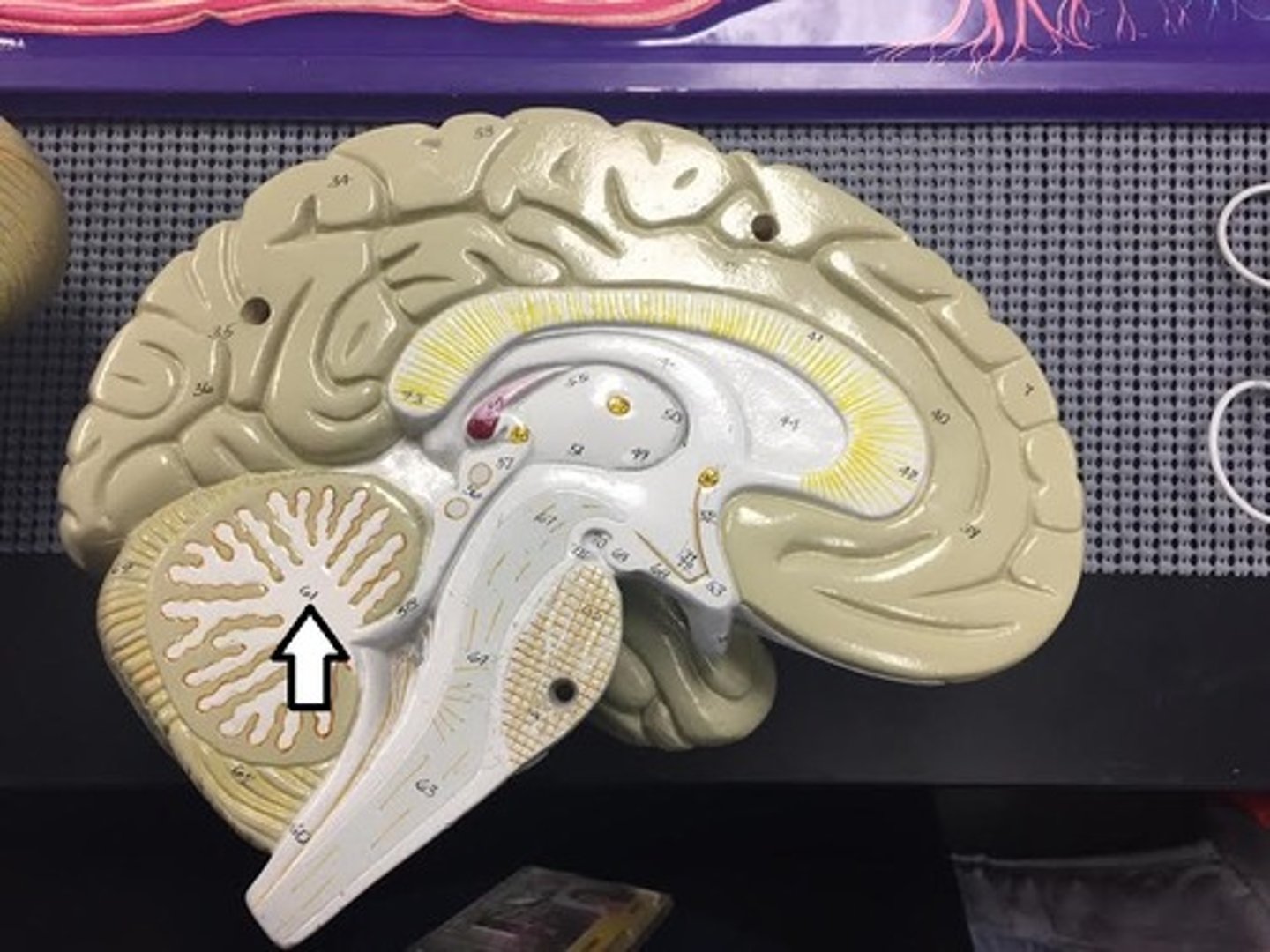
Vermis of Cerebellum-(connects cerebellar hemispheres)
What is #62?
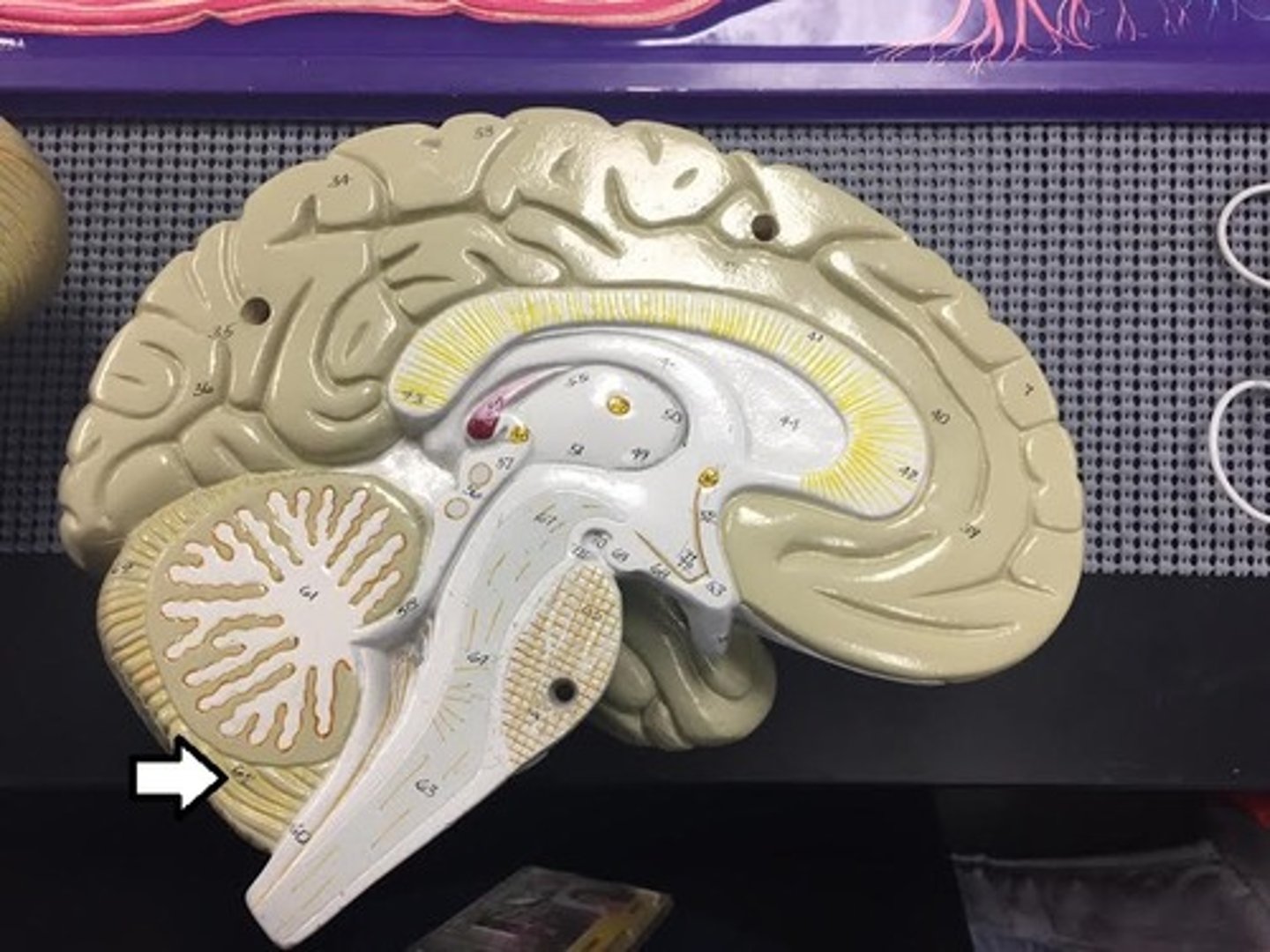
Medulla Oblongata-cardiovascular and respiratory regulation
What is #63?
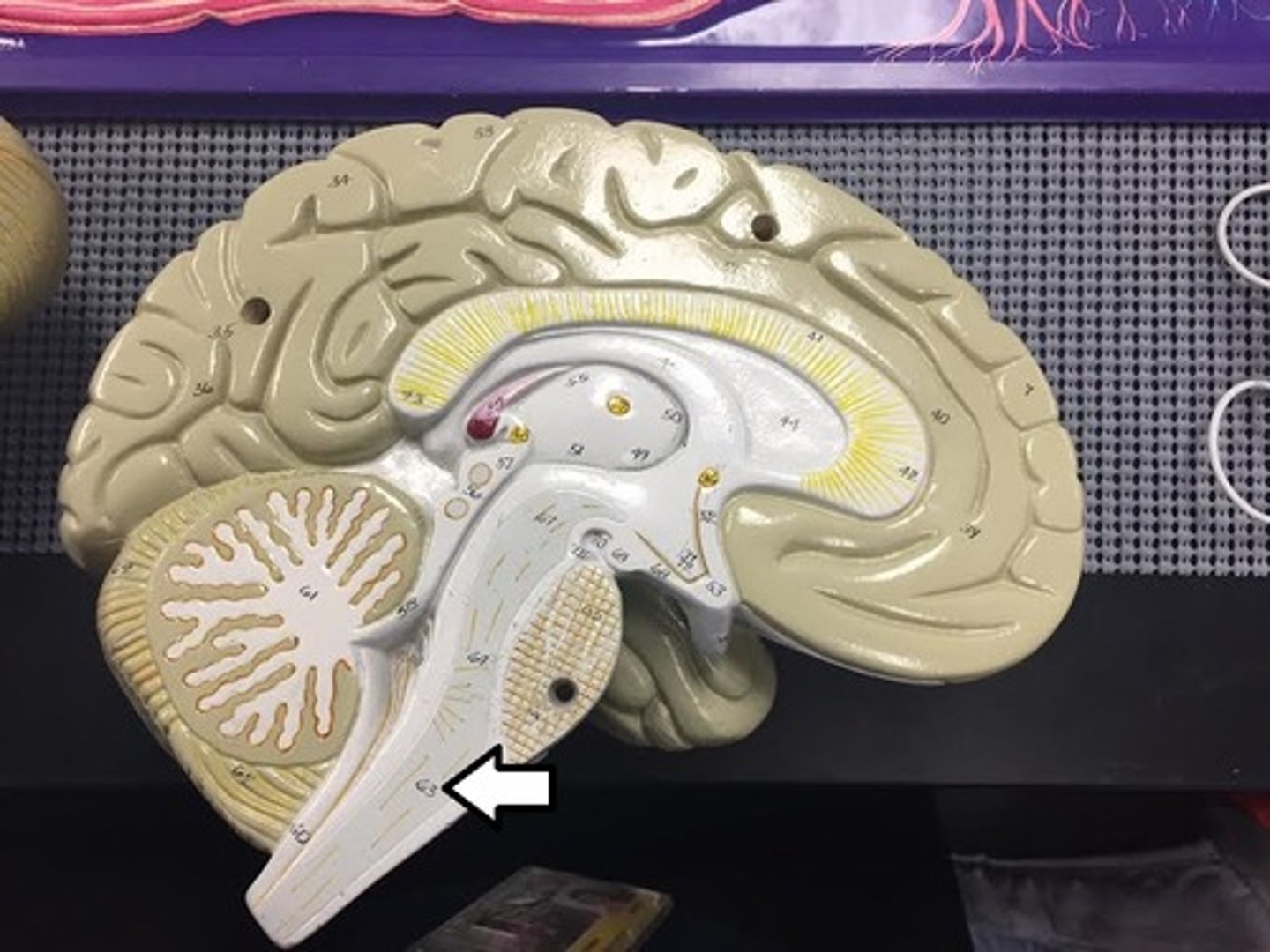
Pons-links cerebellum with structures above the pons and below the pons
What is #65?

Midbrain-connects forebrain and hindbrain
What is #67?
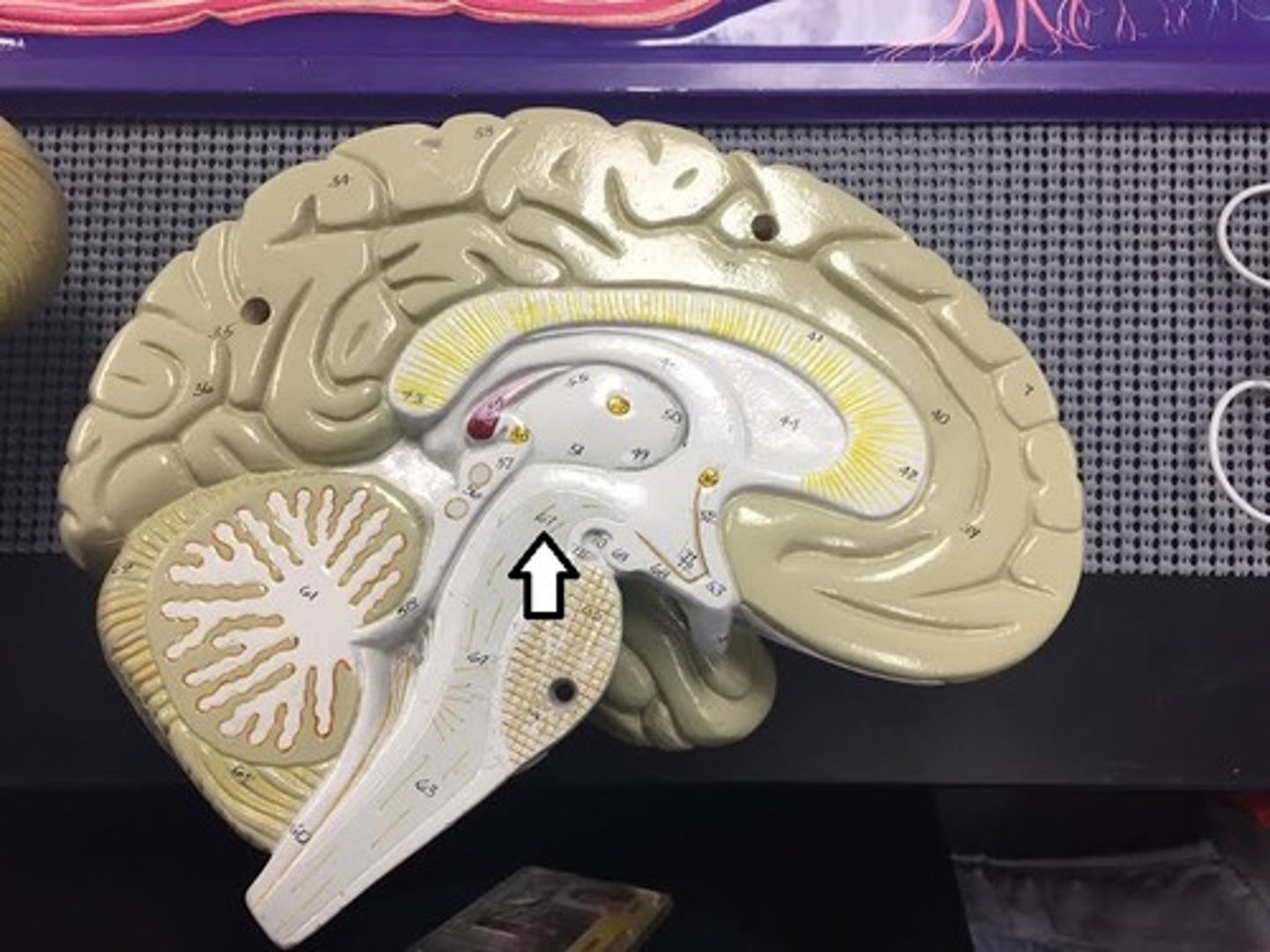
Corpus Callosum-connection between right and left cerebral hemispheres
What is #83?
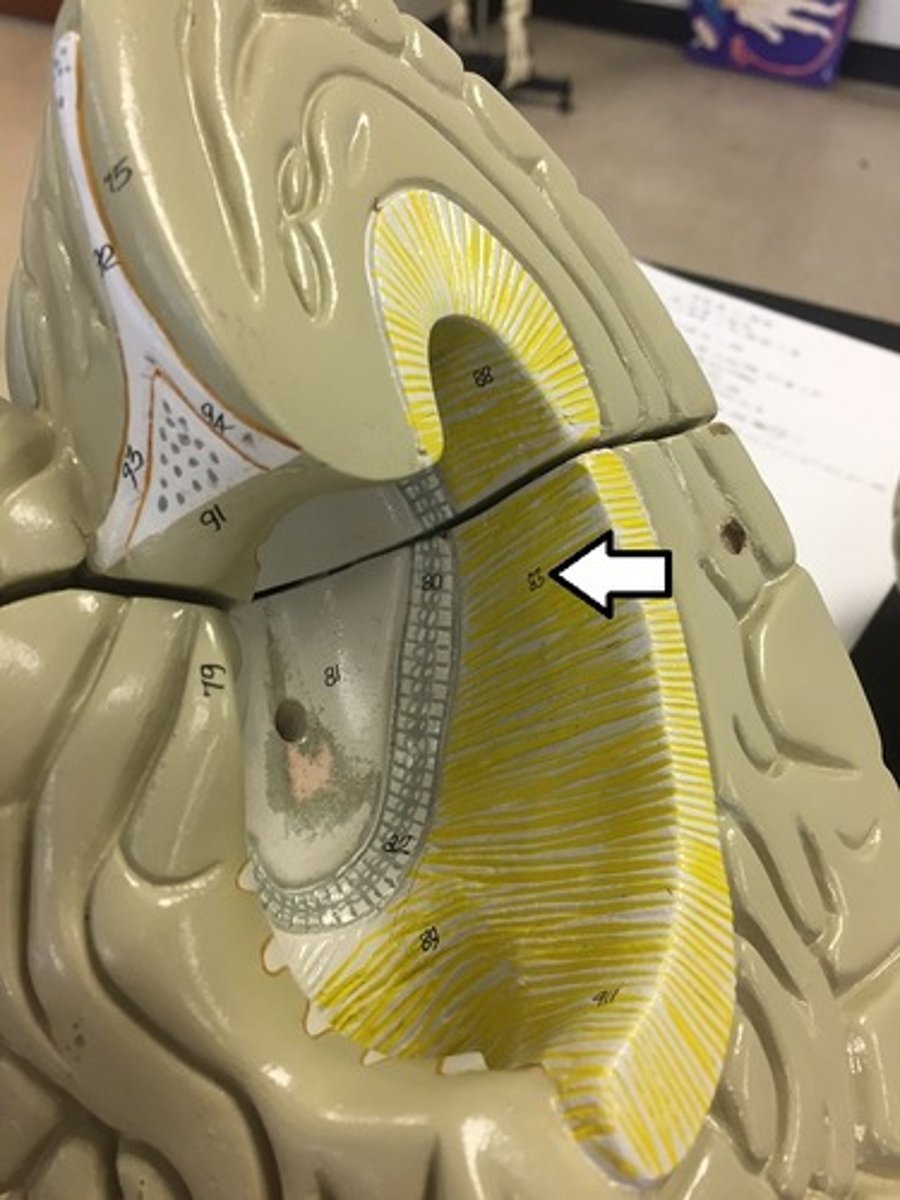
Lateral Ventricle (anterior horn)-choroid plexus and CSF production
What is #88, #89?
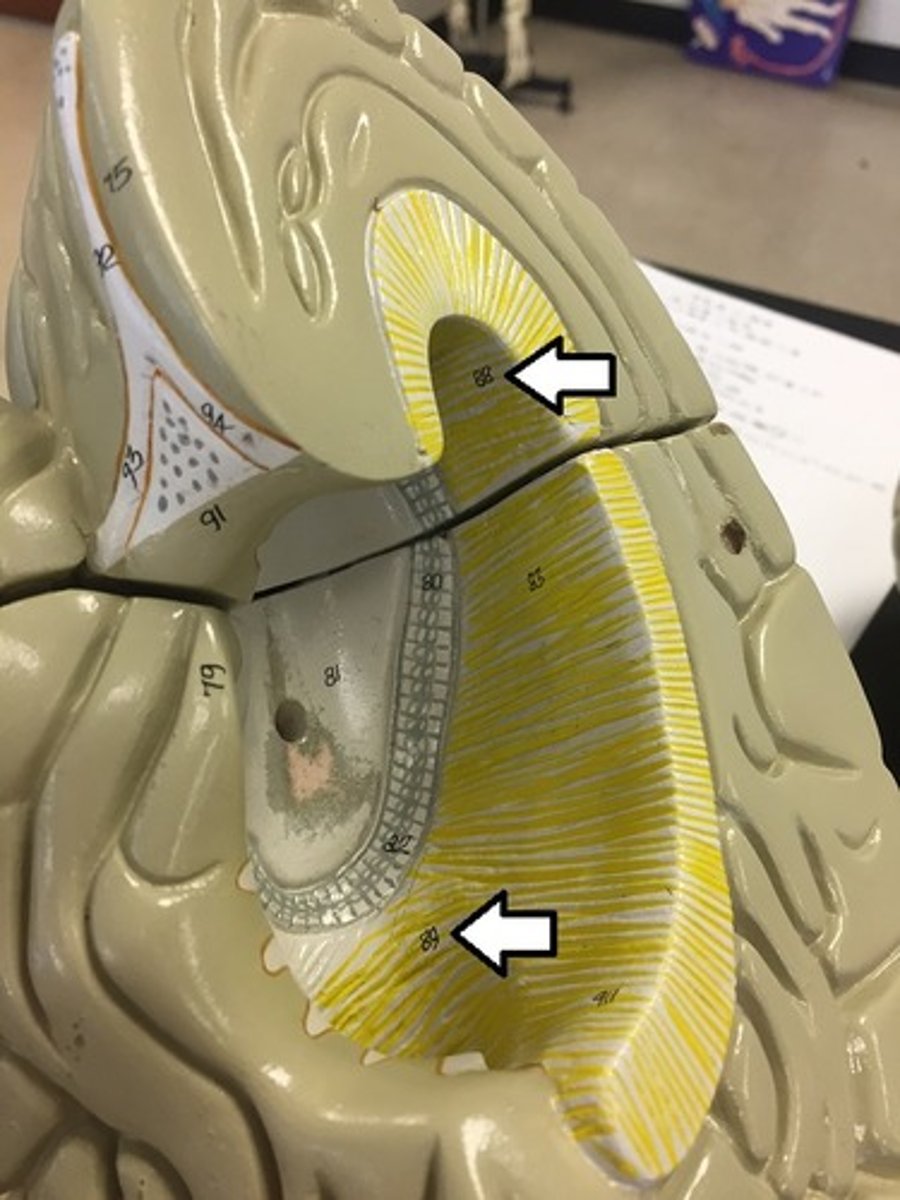
Olfactory Tract (cranial nerve I)-smell
What is #92, #93, #94?
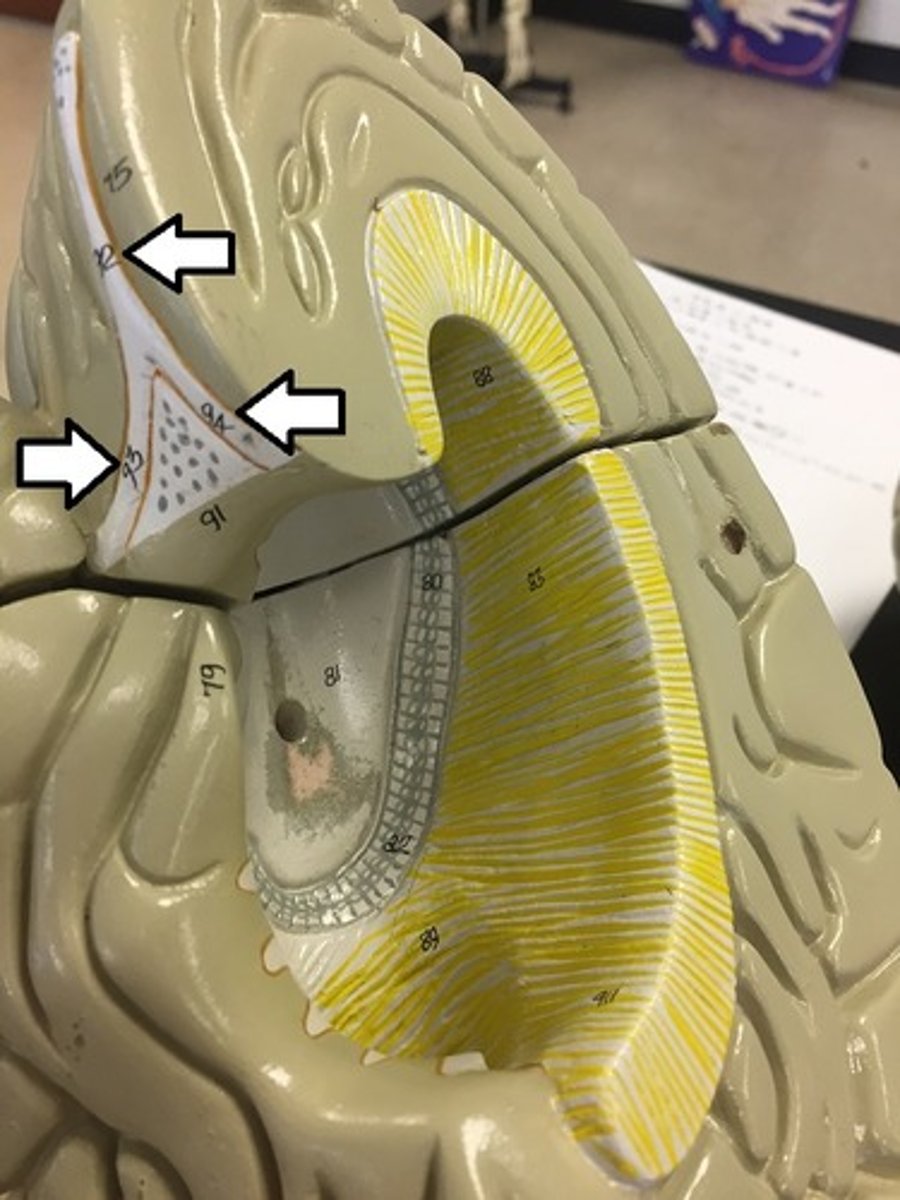
Basal Ganglia-motor function
What is #96, #98?

Longitudinal Fissure
What is the groove that separates the cerebral hemispheres?
Optic Tract and Nerve (cranial nerve II)-visual system
What is #111, #112?
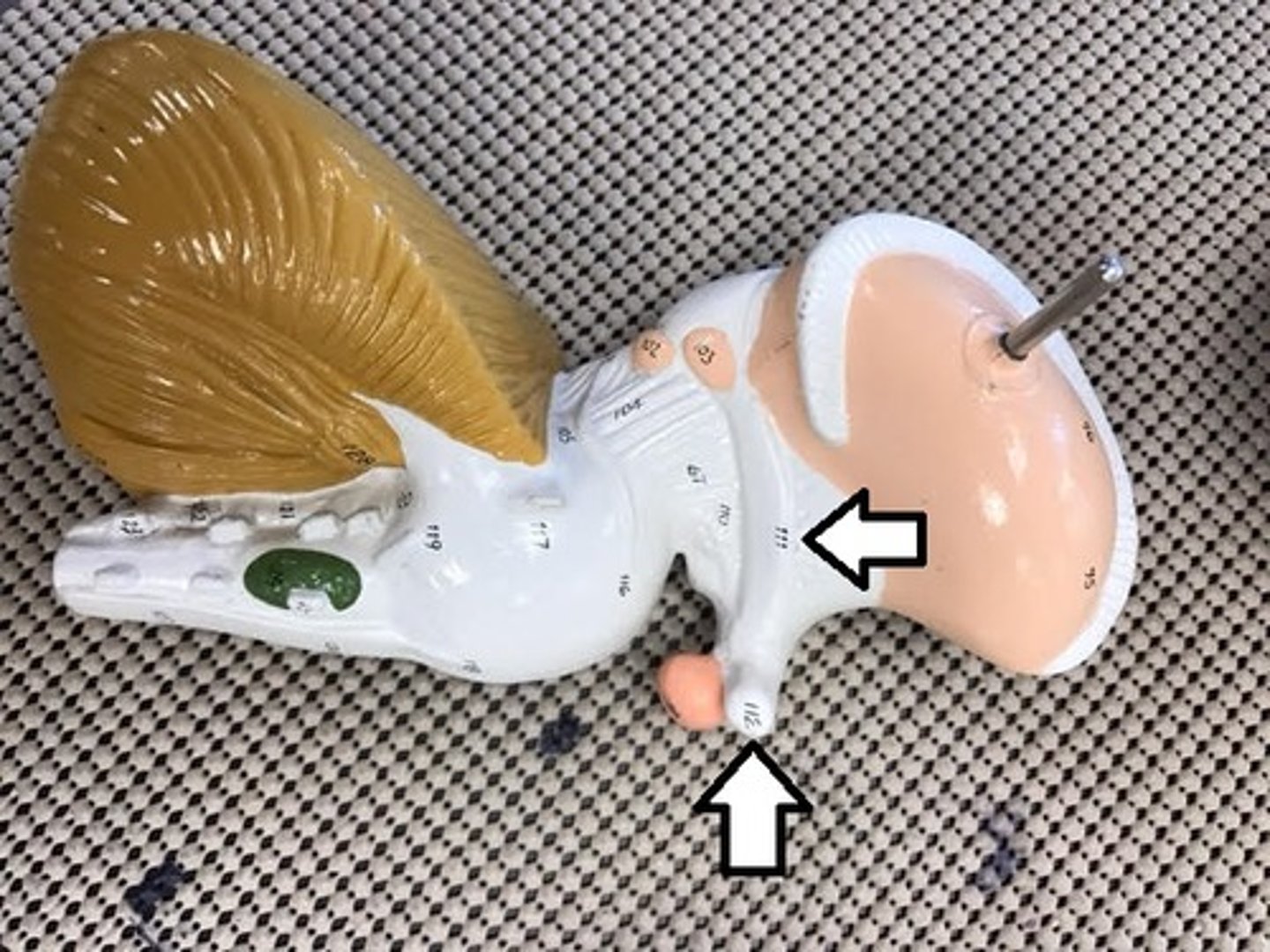
Cavity of Third Ventricle-CSF produced in Choroid Plexus
What is #113?
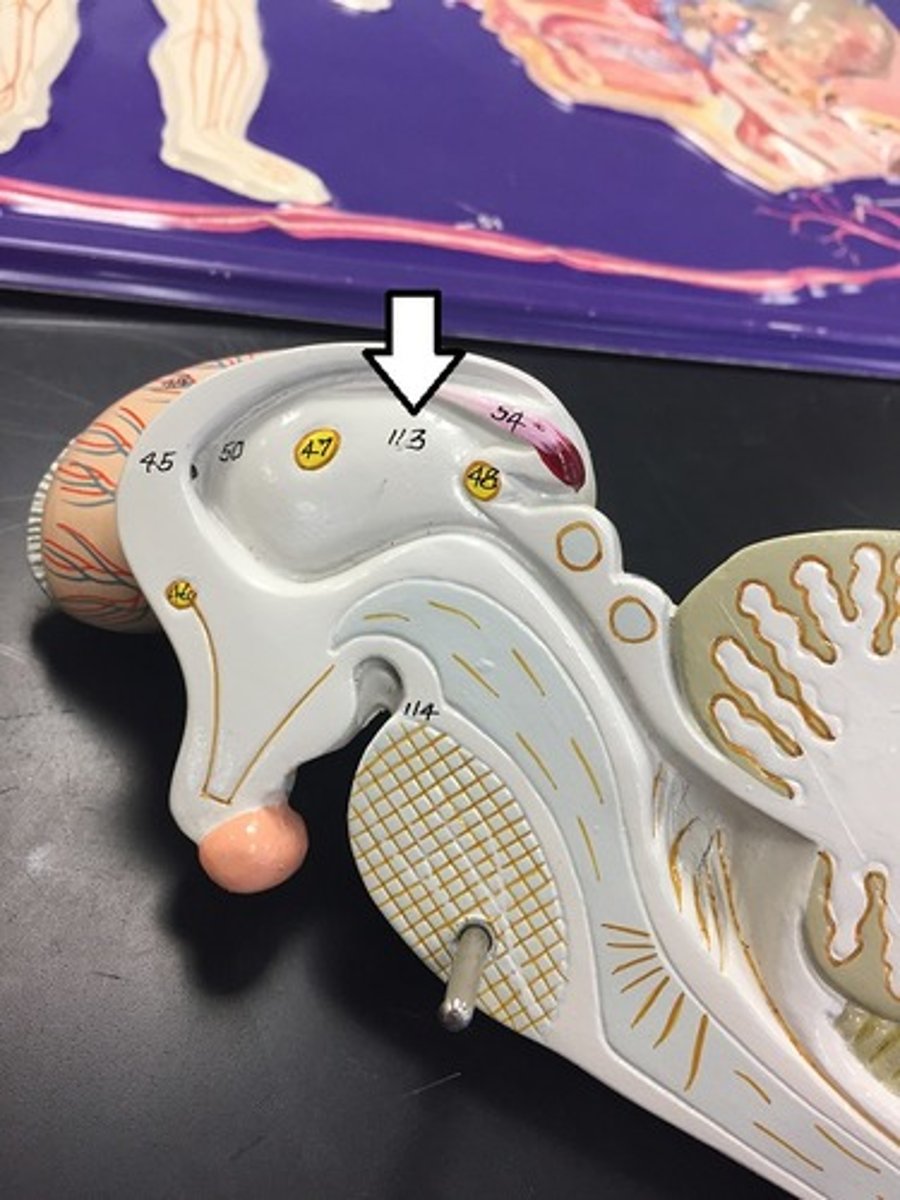
Oculomotor Nerve (cranial nerve III)-eye muslces
What is #114?
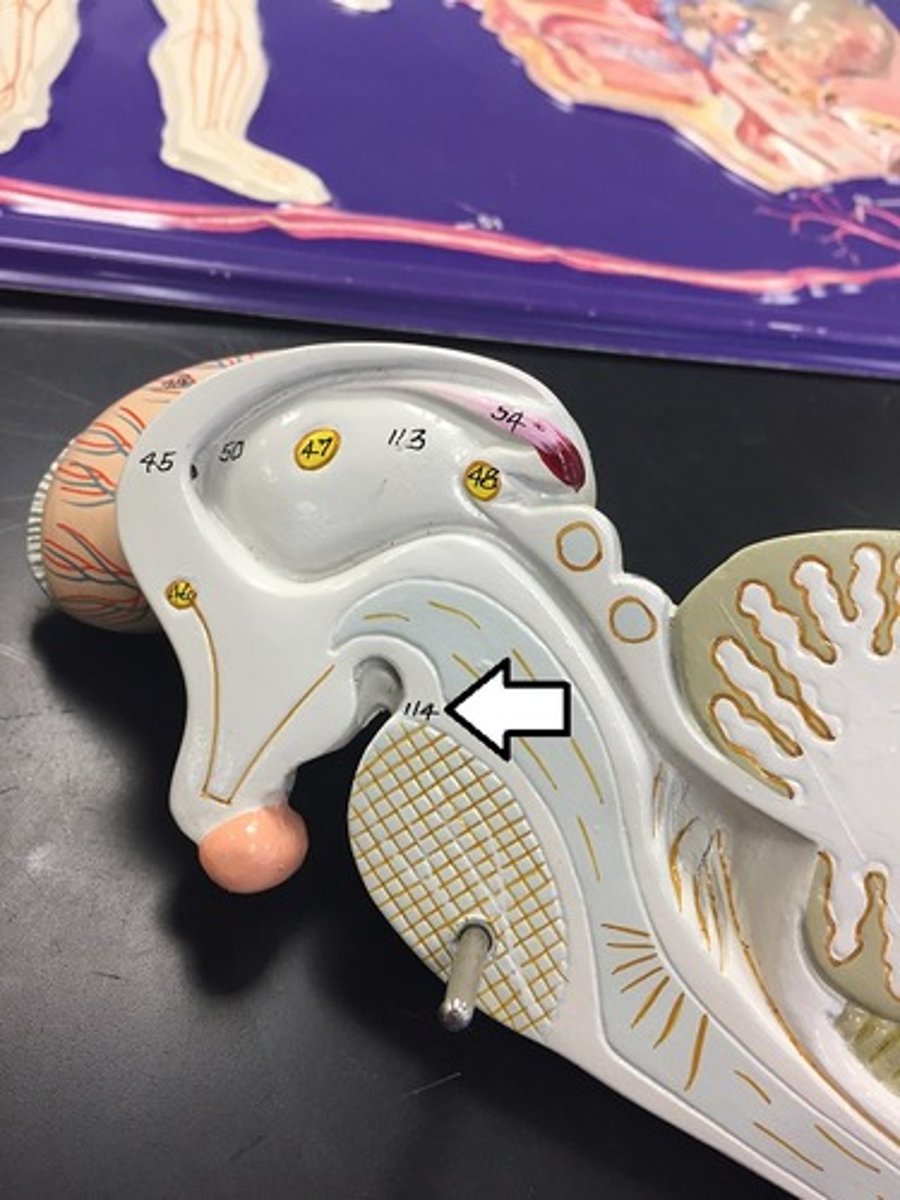
Pituitary Gland-neuroendocrine function
What is #115?
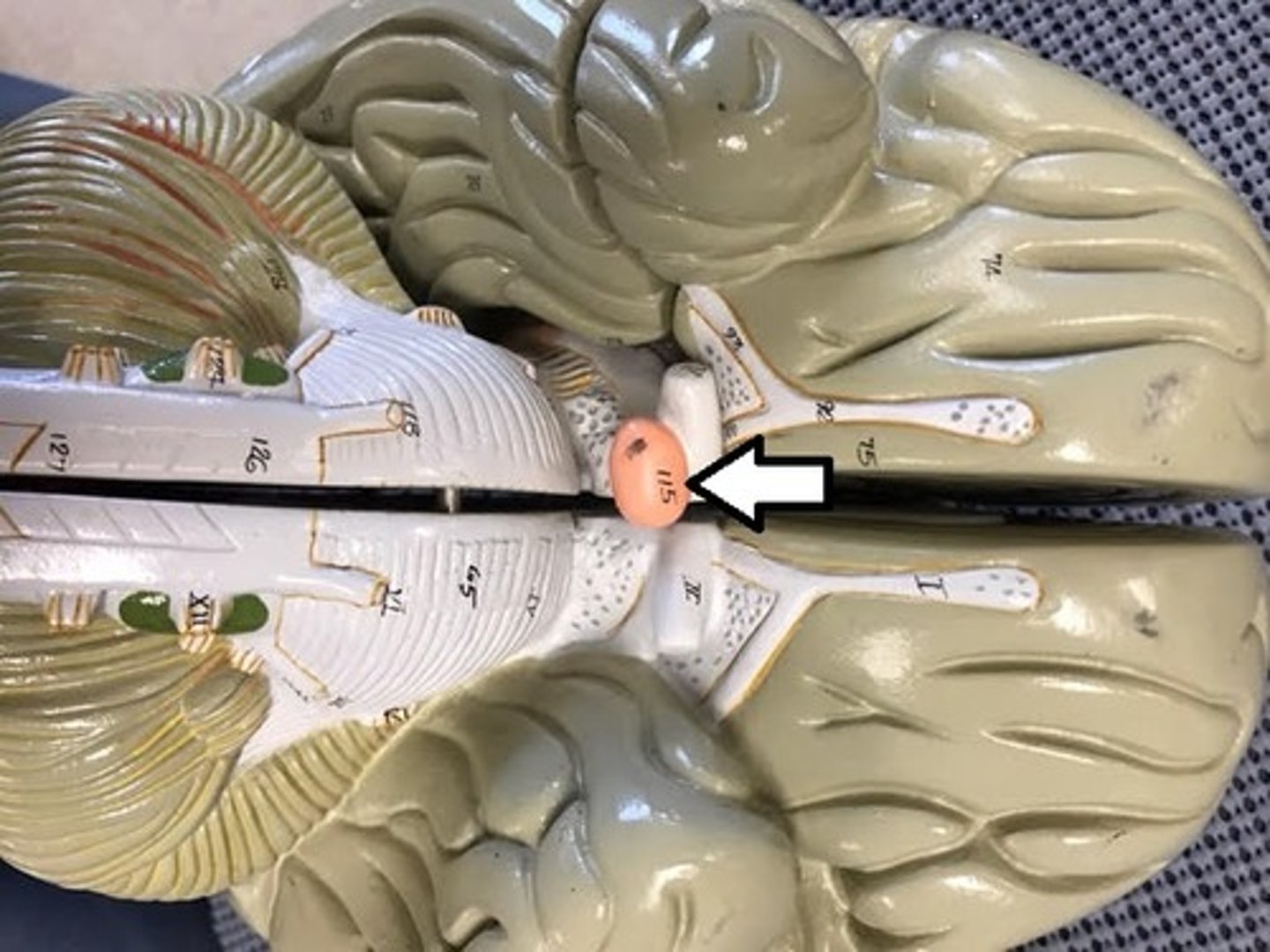
Trochlear Nerve (cranial nerve IV)-eye muscles
What is #116?
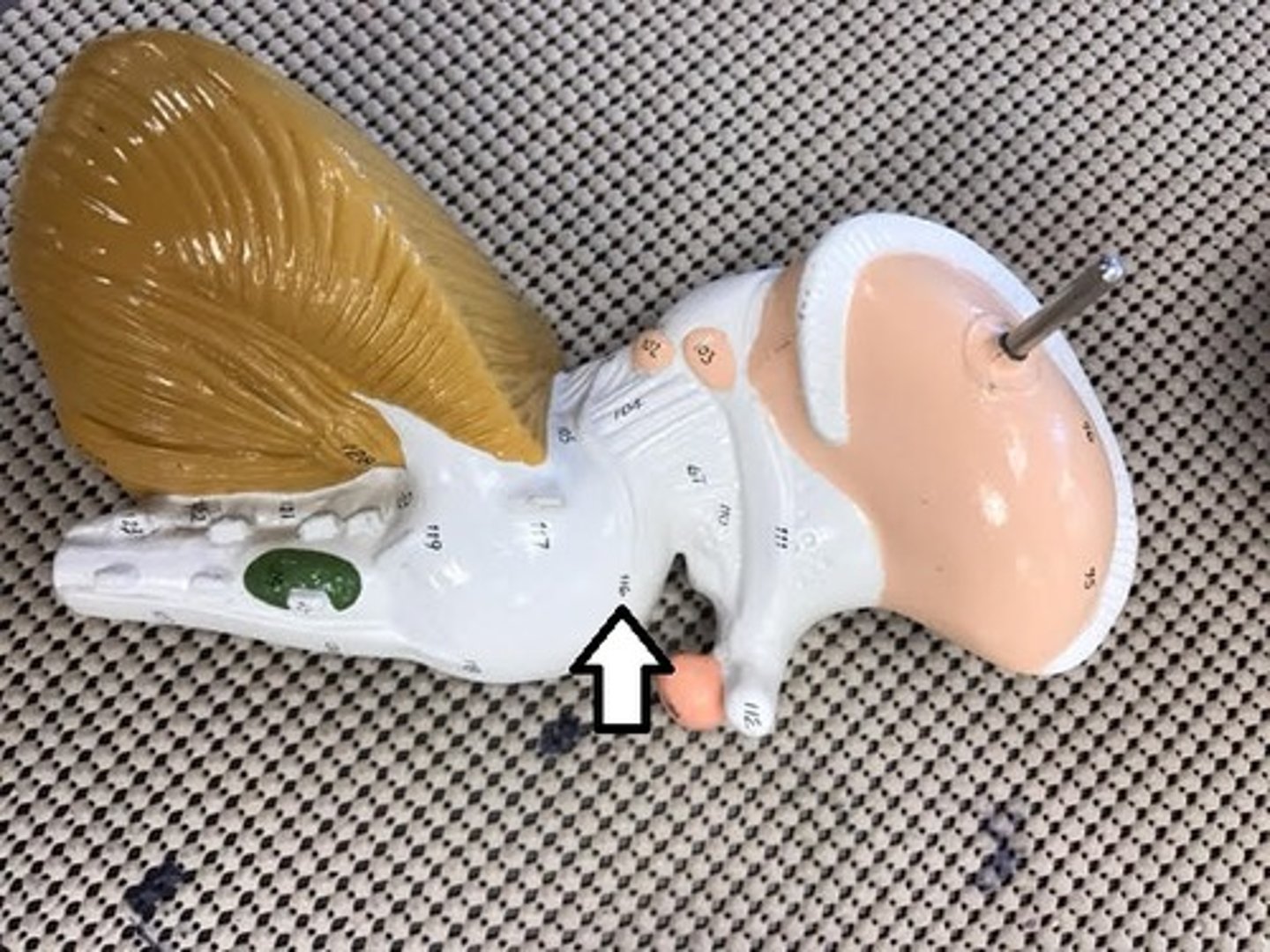
Trigeminal Nerve (cranial nerve V)-mastication
What is #117?
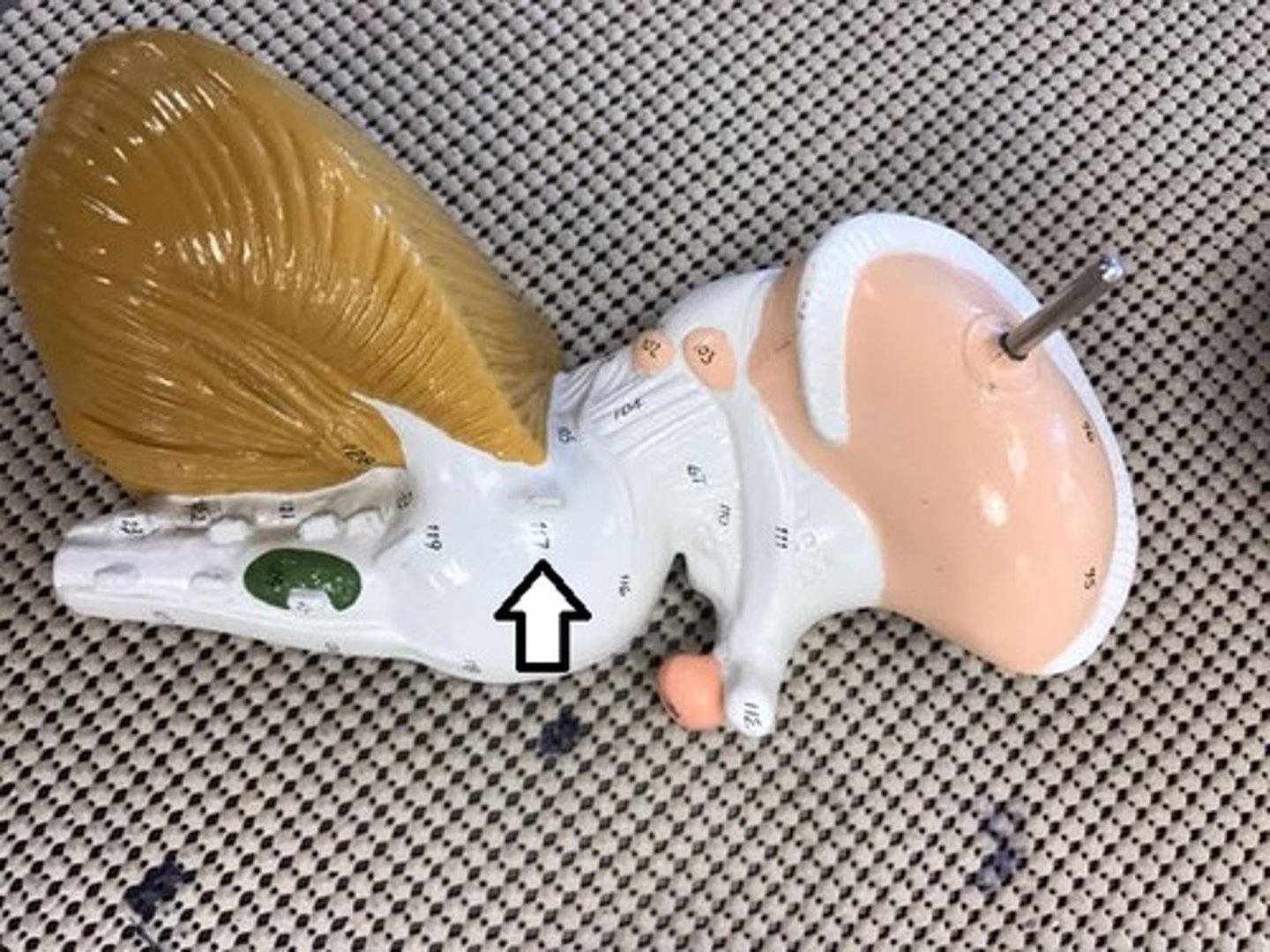
Abducens Nerve (cranial nerve VI)-eye muscles
What is #118?

Facial Nerve (cranial nerve VII)-facial muscles, taste
What is #119?

Vsetibulocochlear Nerve (cranial nerve VIII)-hearing and equilibrium
What is #120?
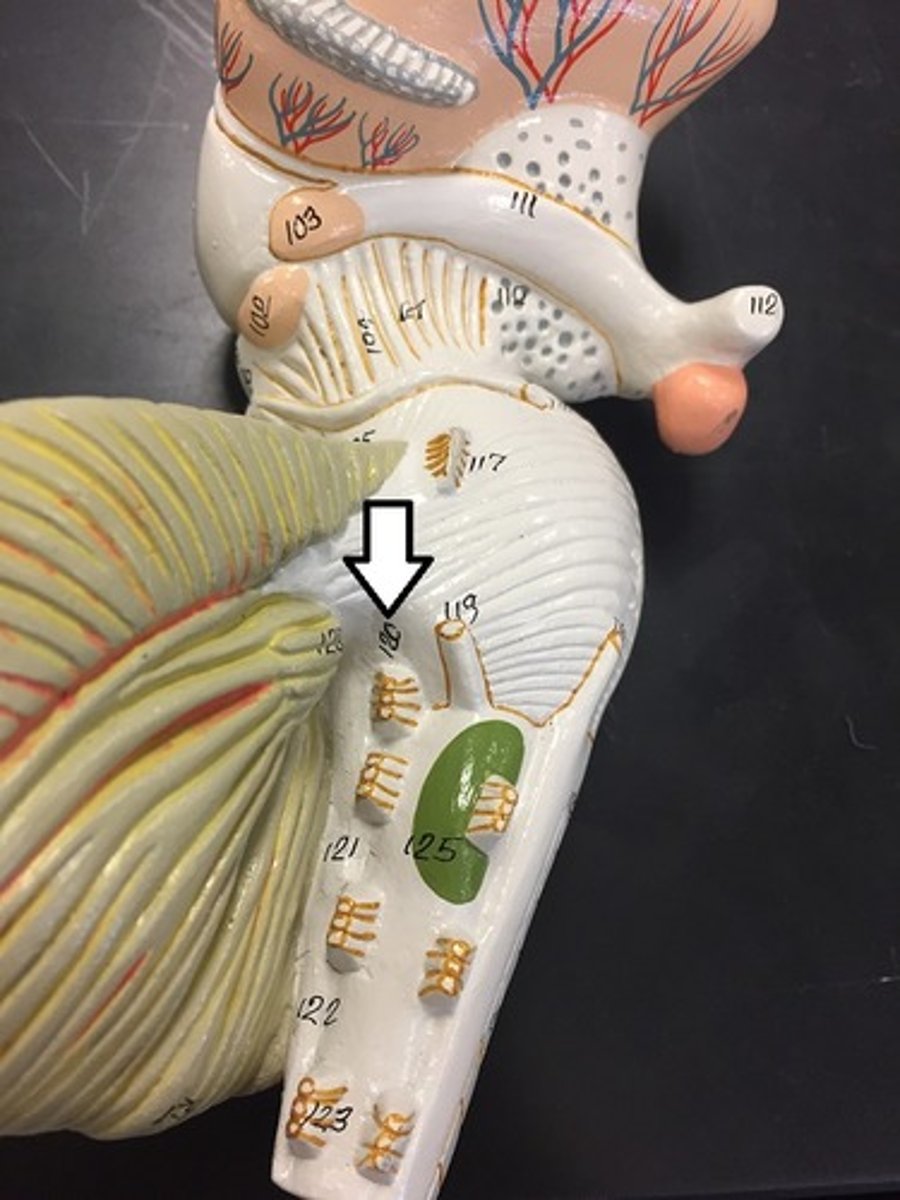
Glossopharyngeal Nerve (cranial nerve IX)-taste
What is #121?
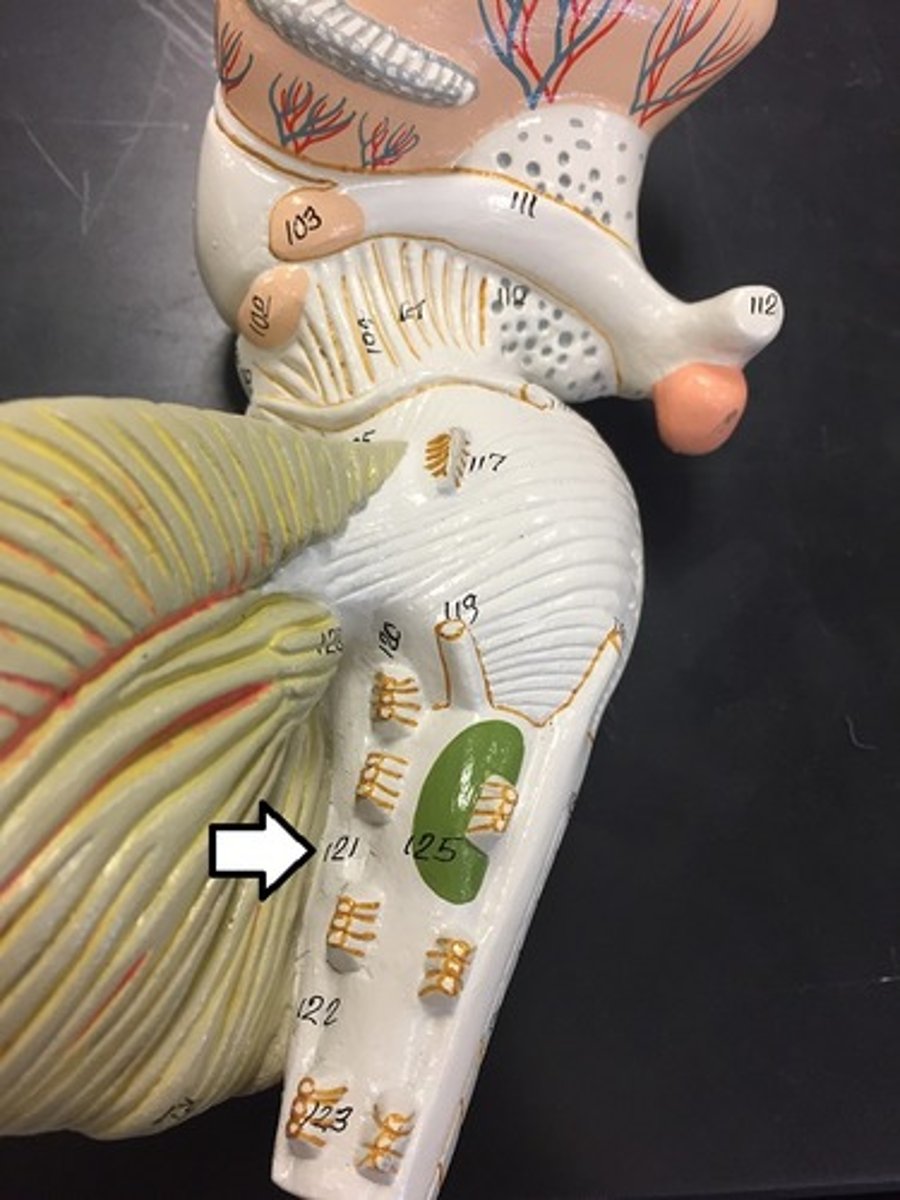
Vagus Nerve (cranial nerve X)-parasympathetic
What is #122?

Accessory Nerve (cranial nerve XI)-neck muscles
What is #123?
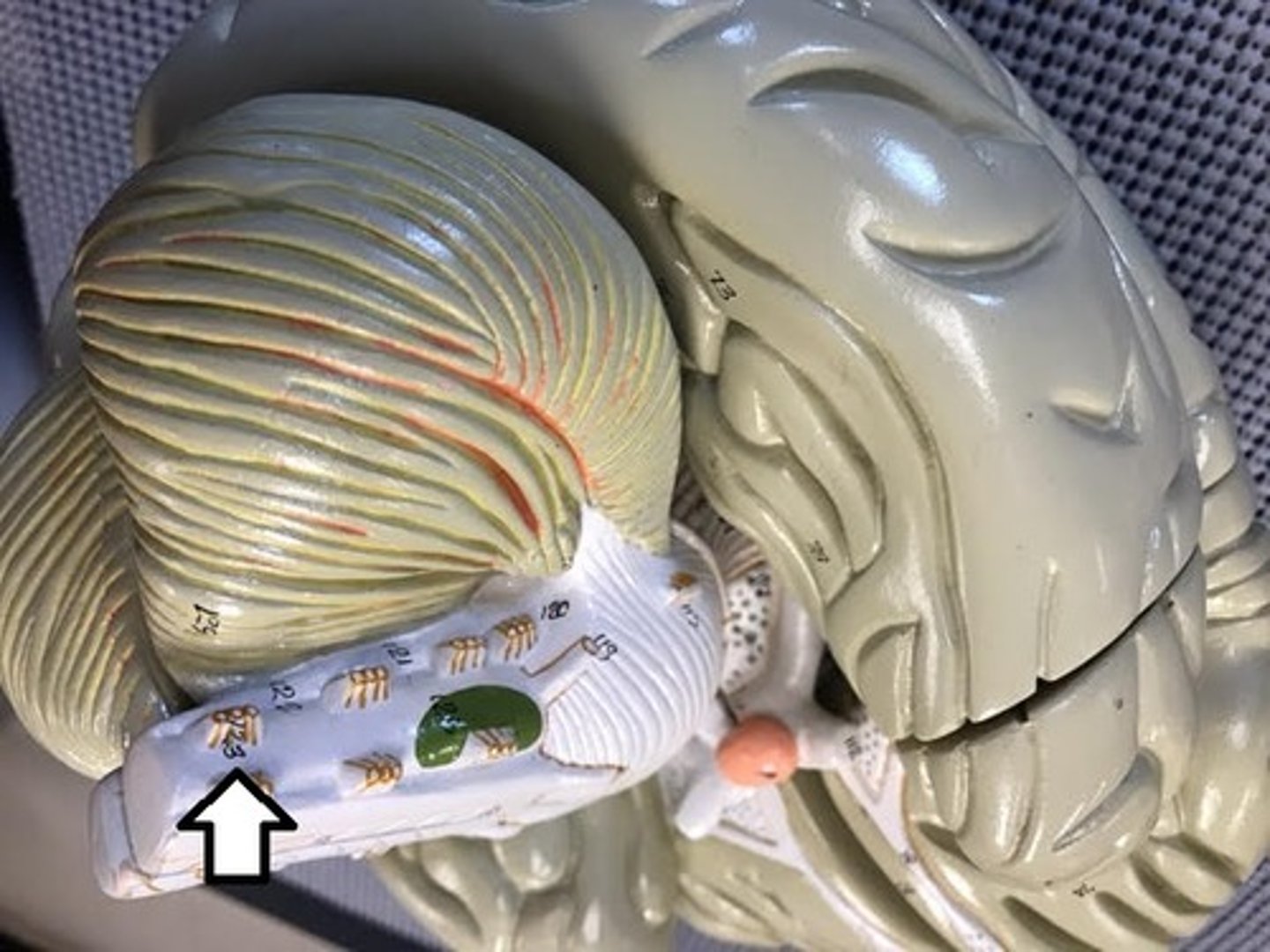
Hypoglossal Nerve (cranial nerve XII)-tongue muscles
What is #124?
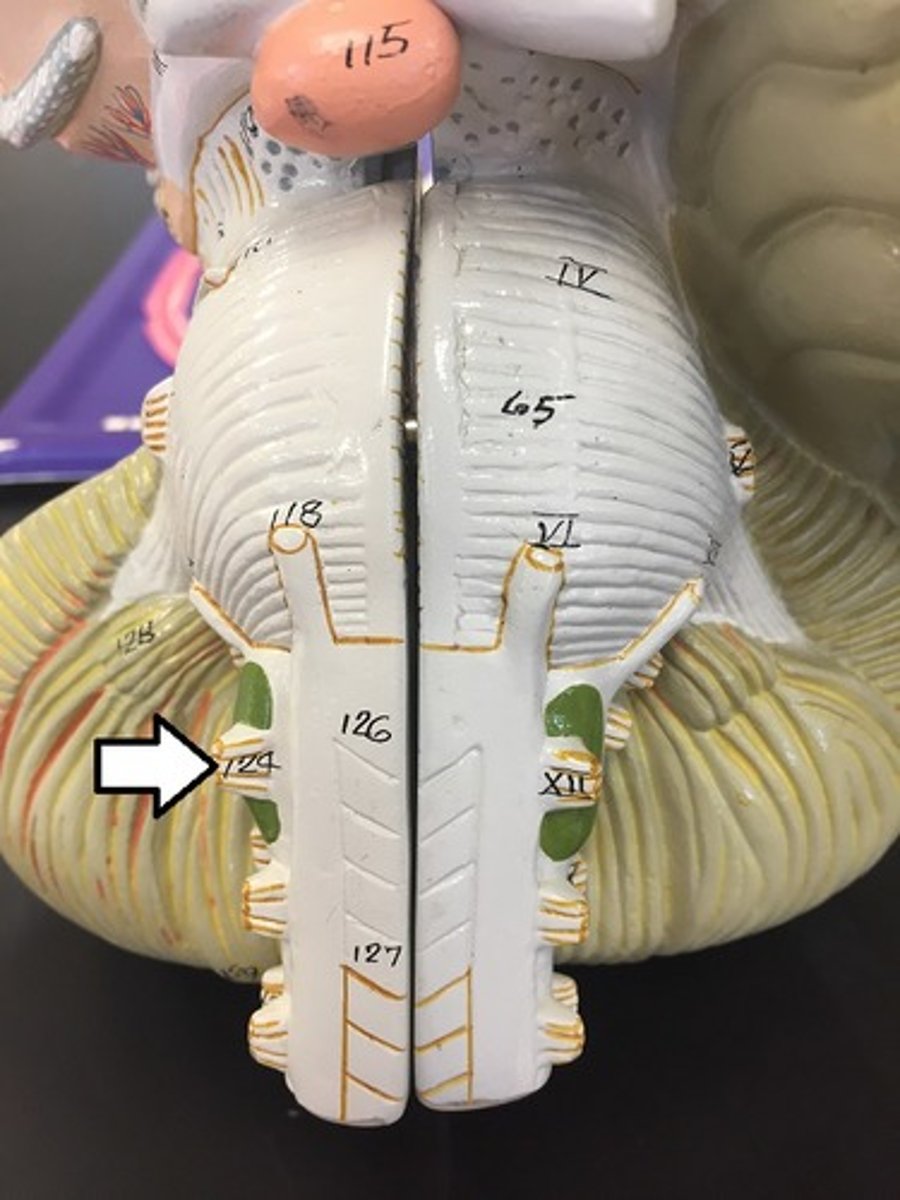
Olive-inferior olivary nucleus, connections with cerebellum
What is #125?
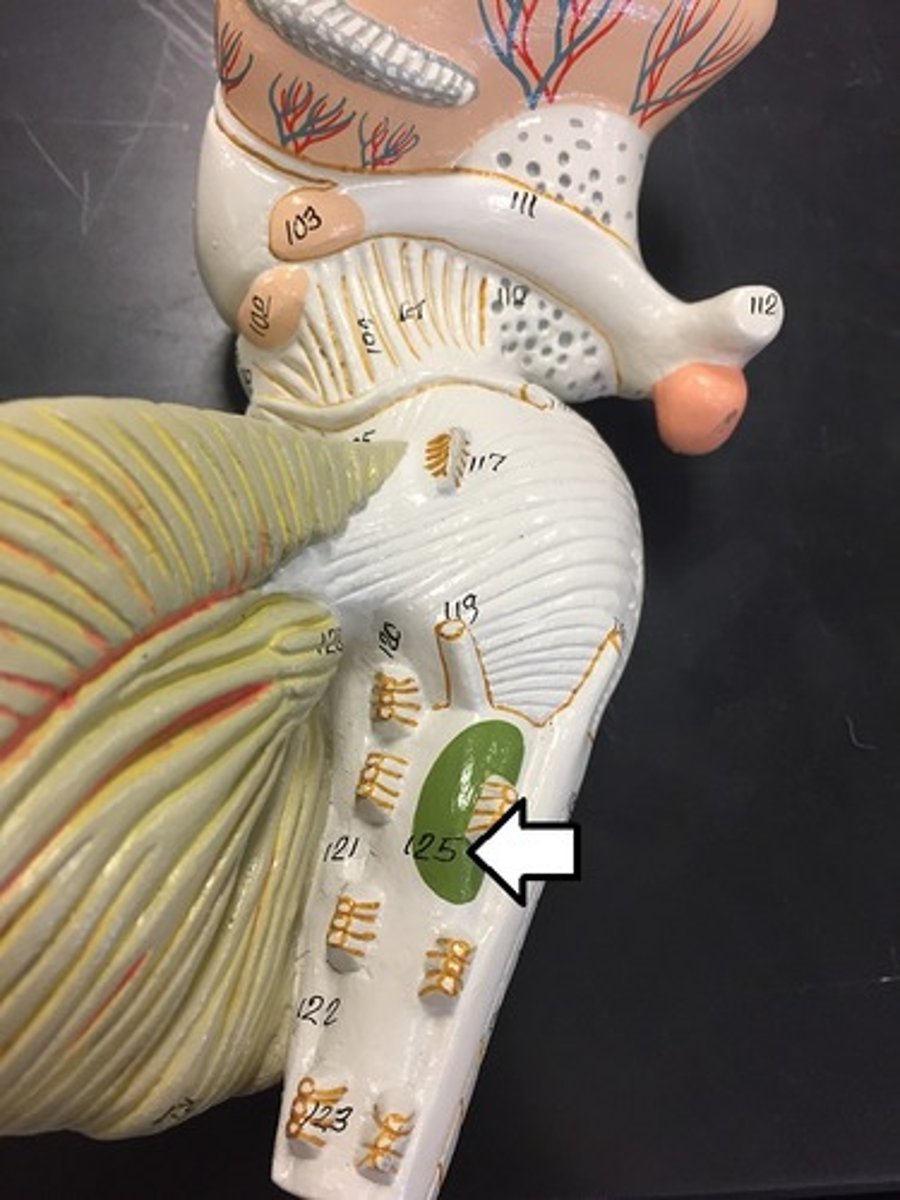
Cerebellum-motor function
What is #128, #129, #130?
